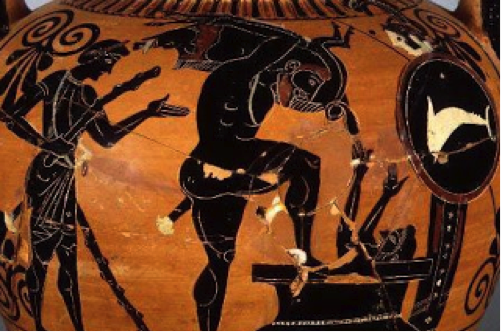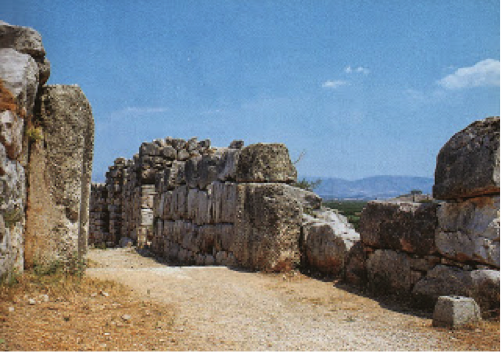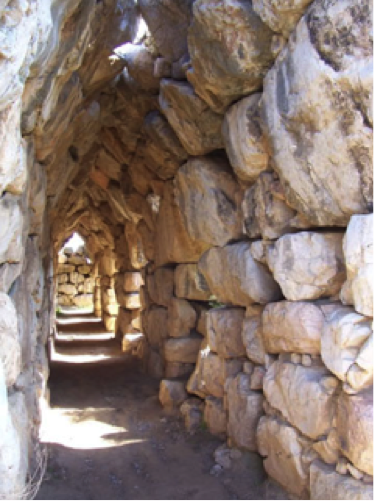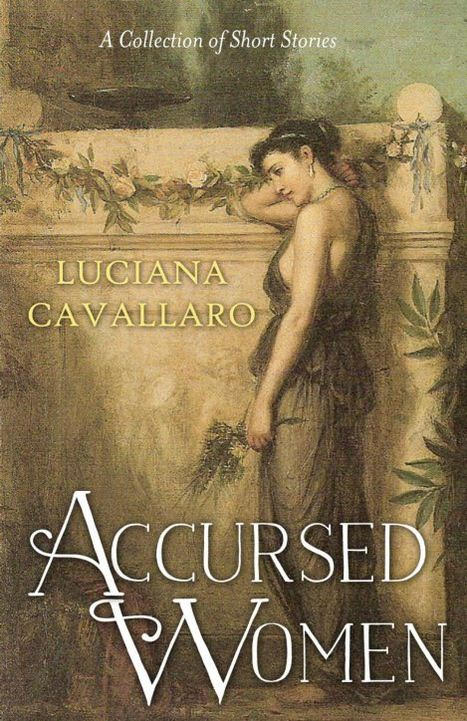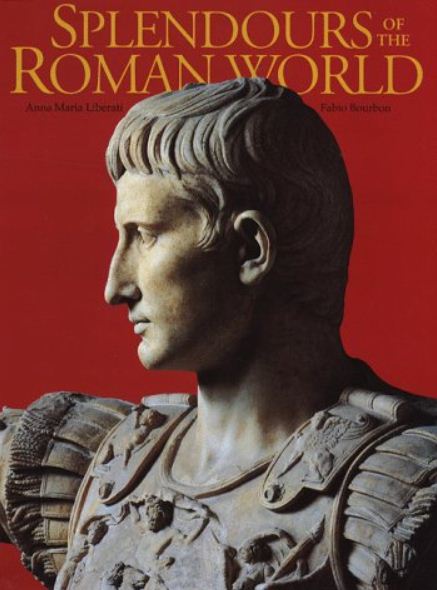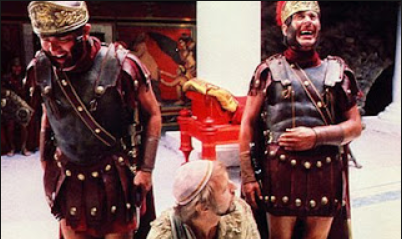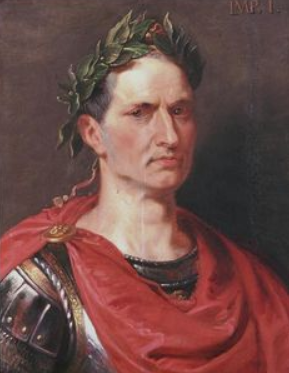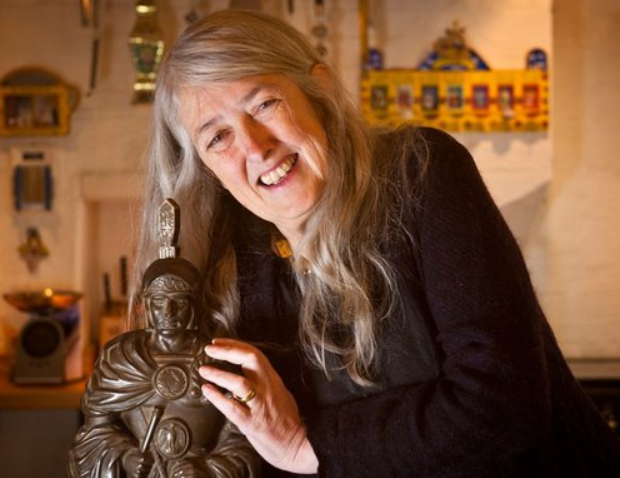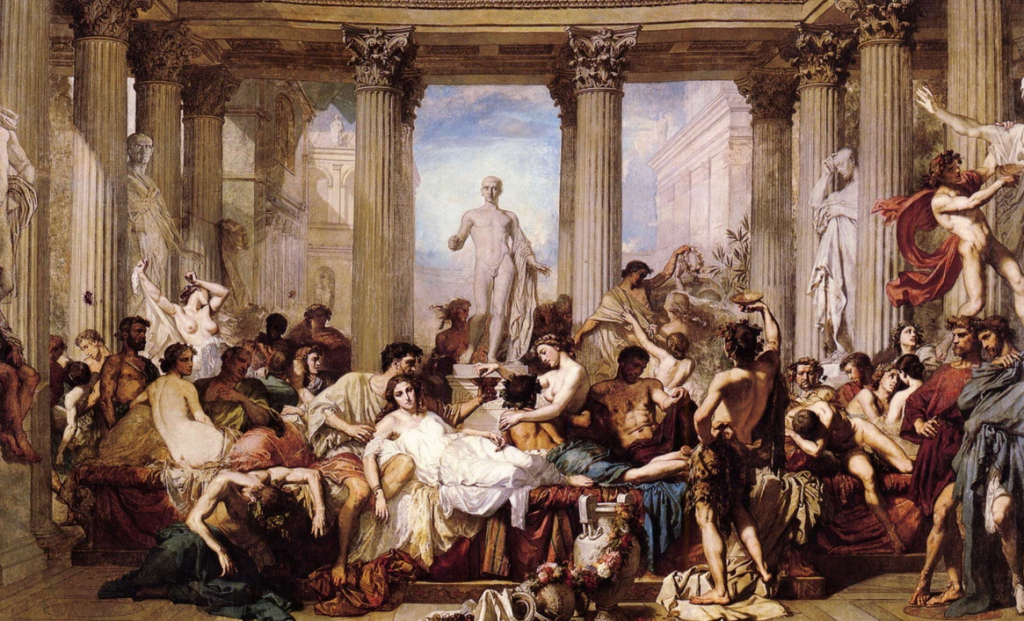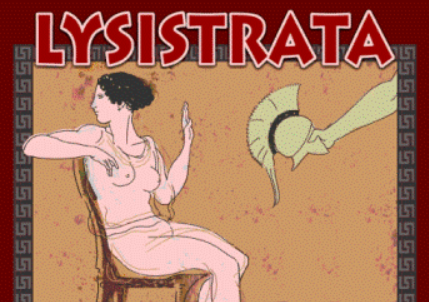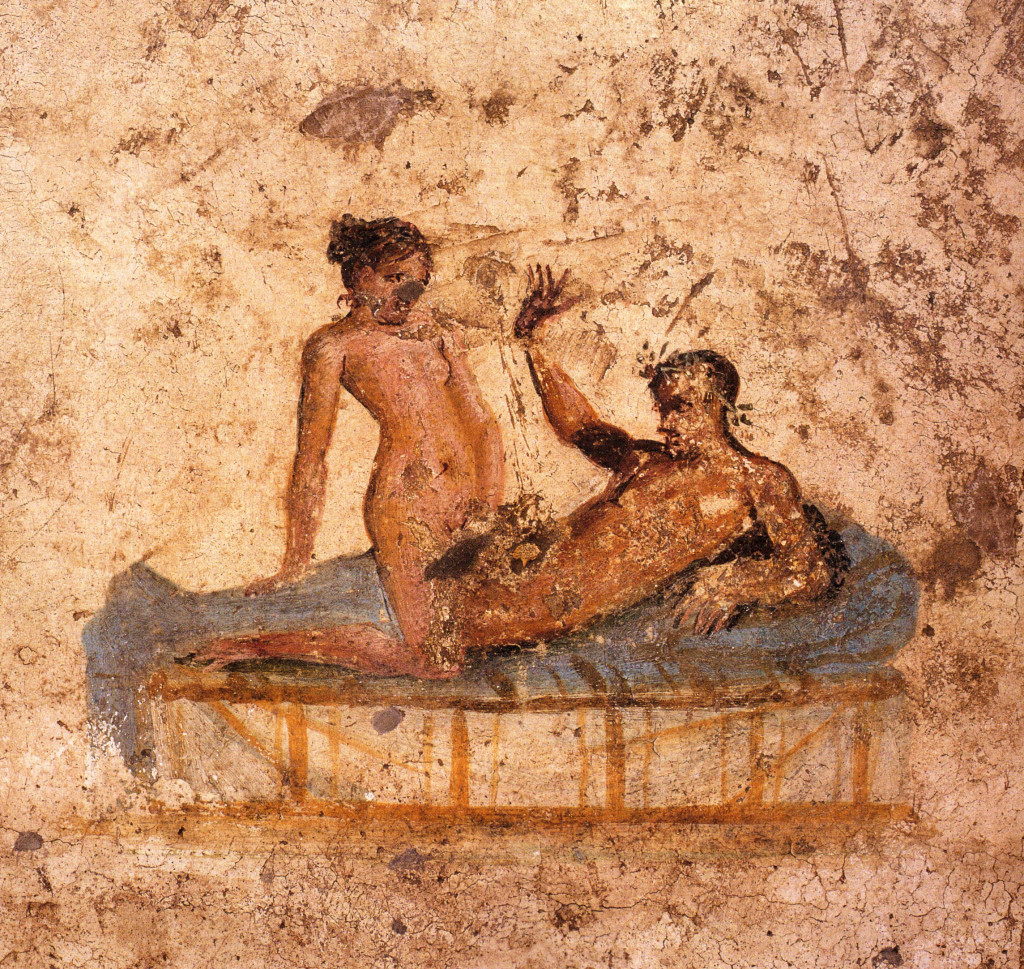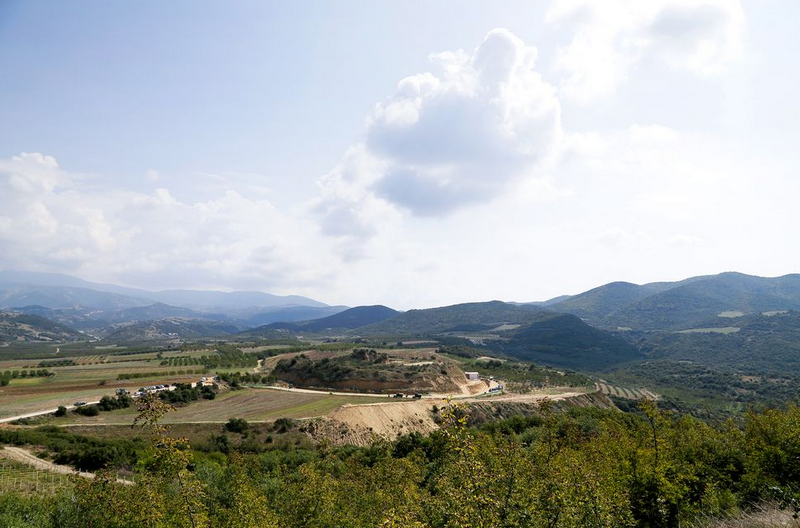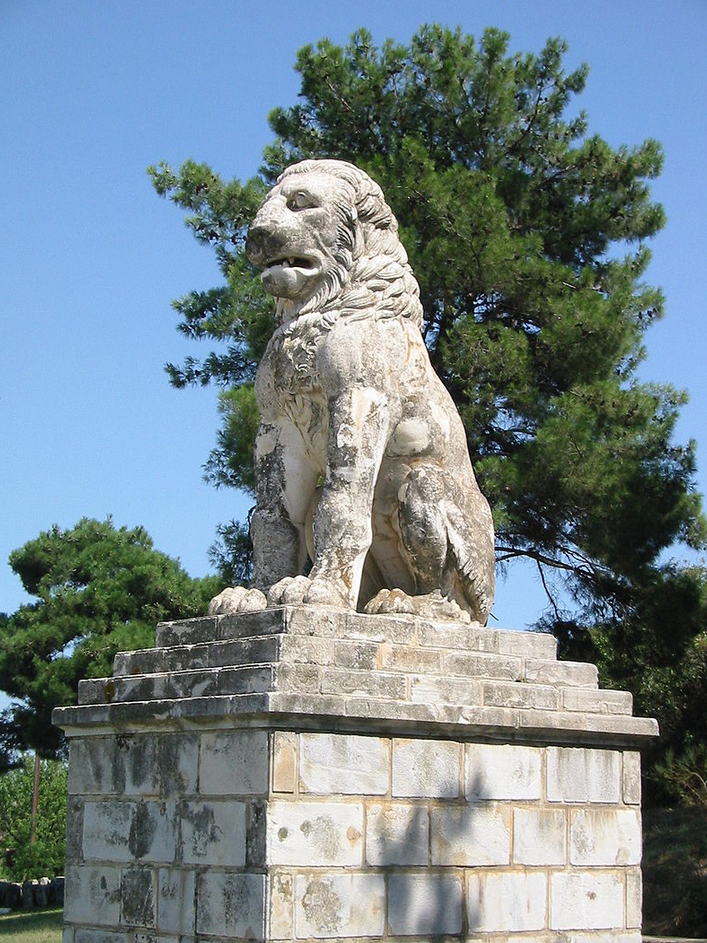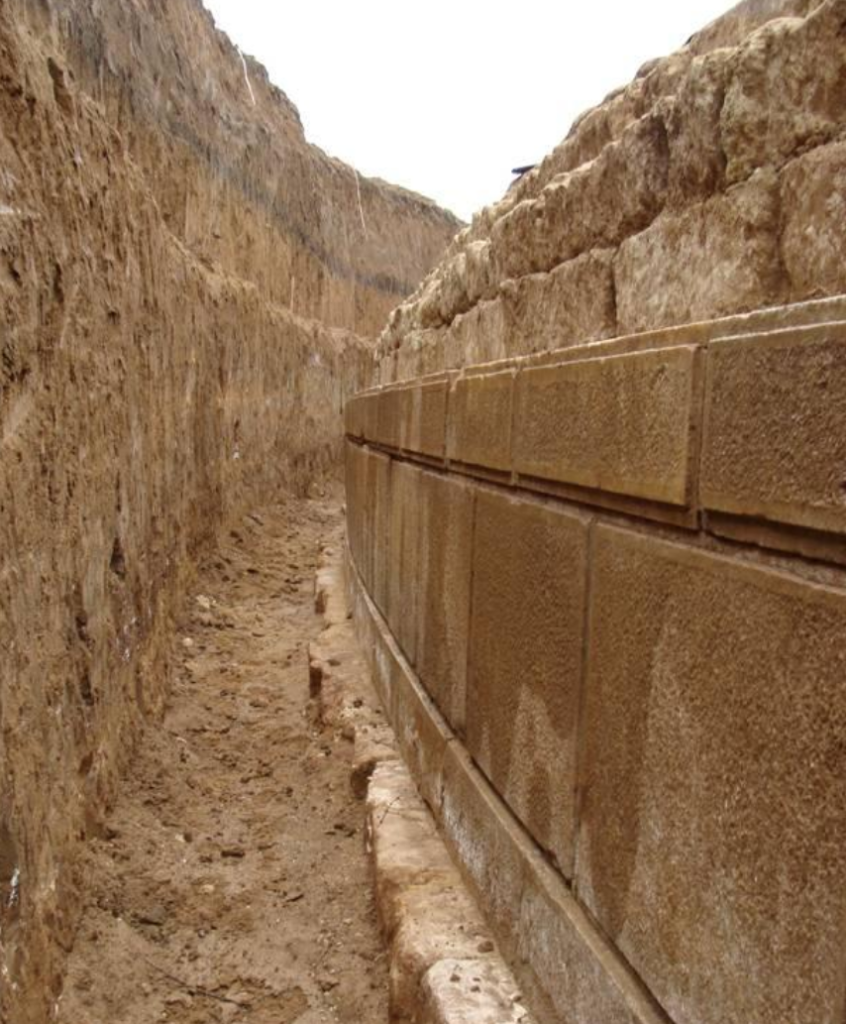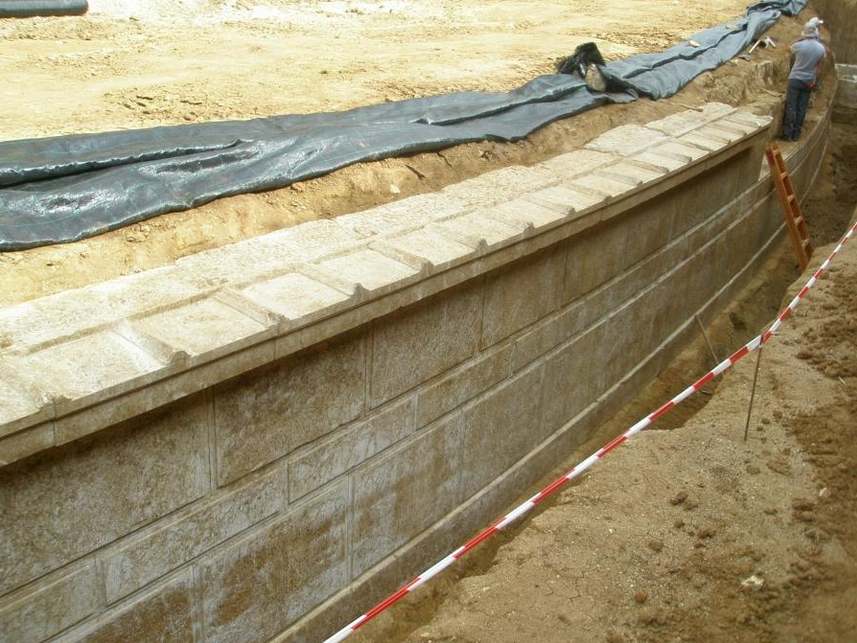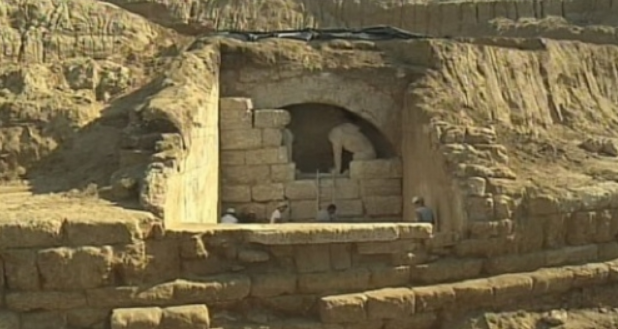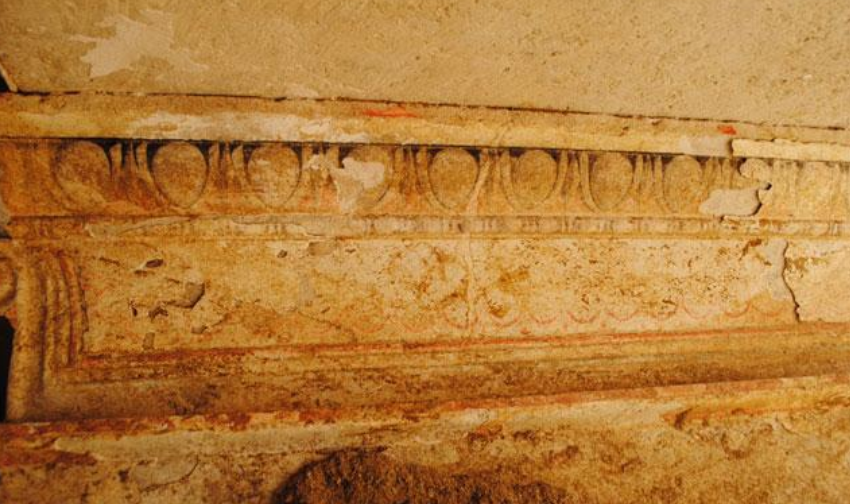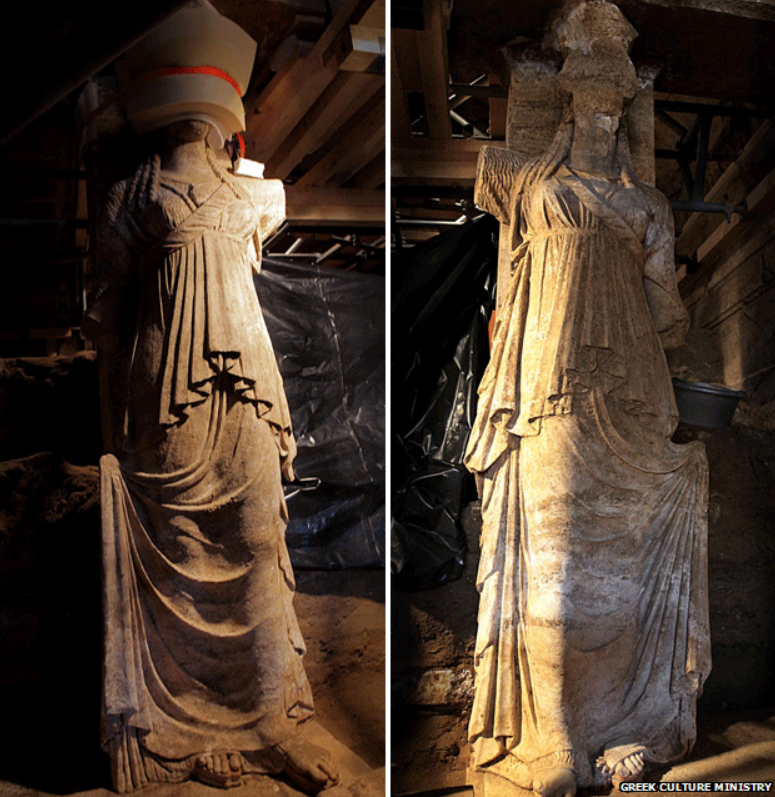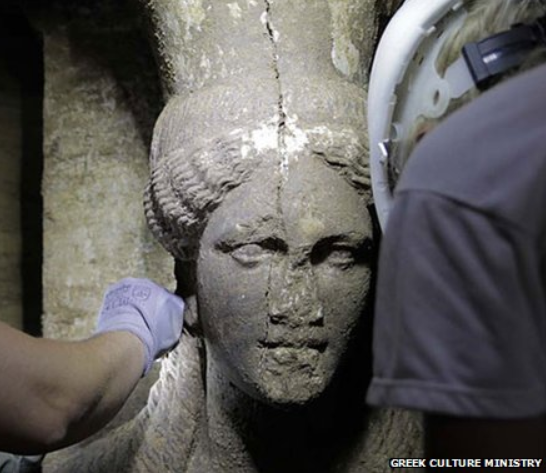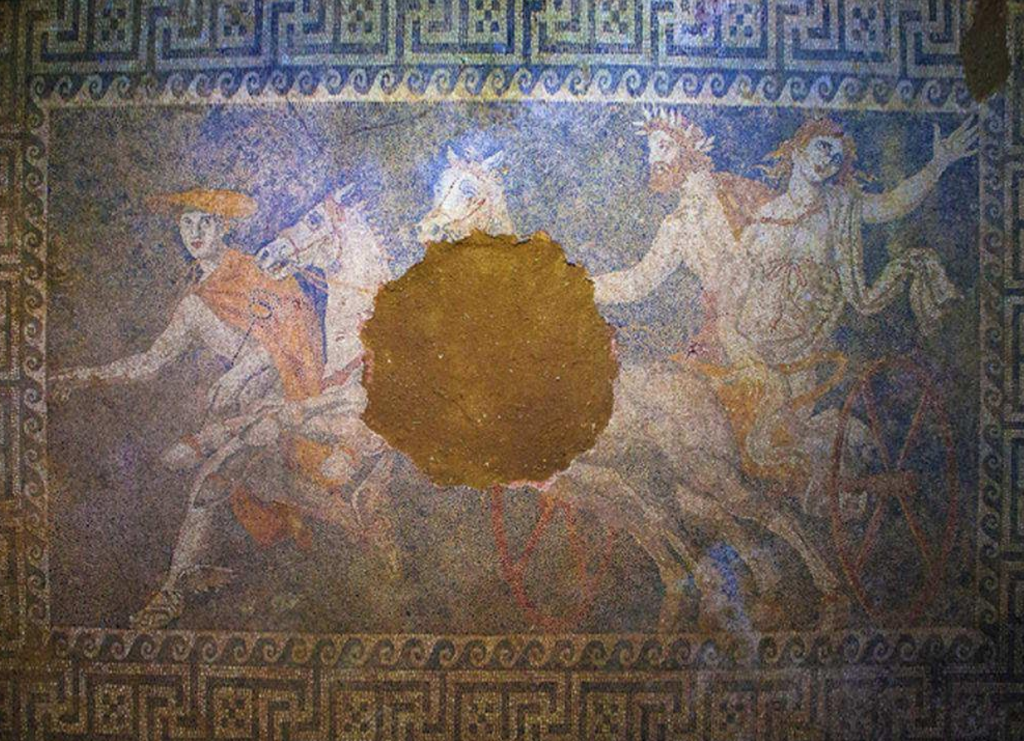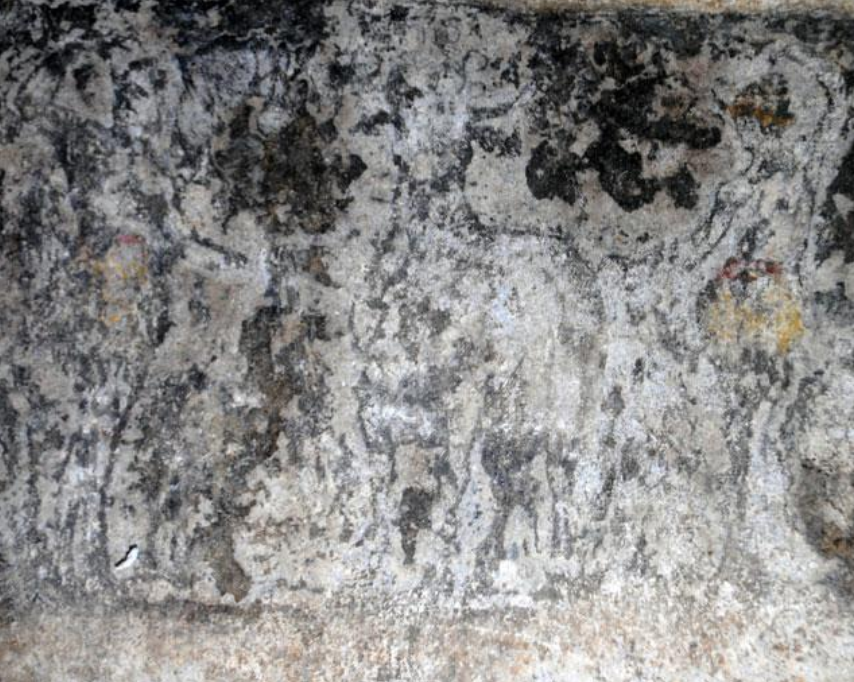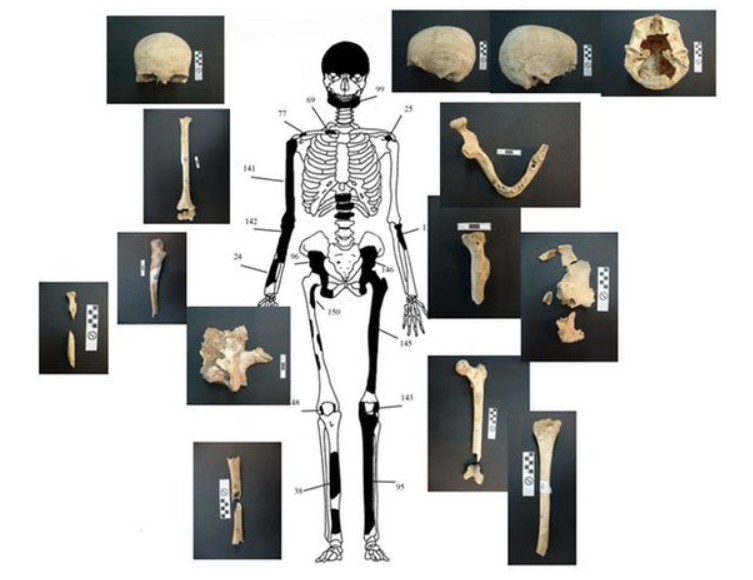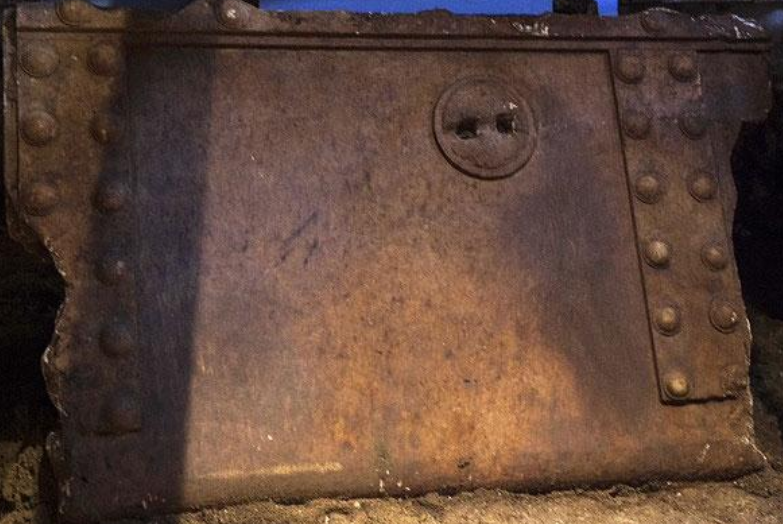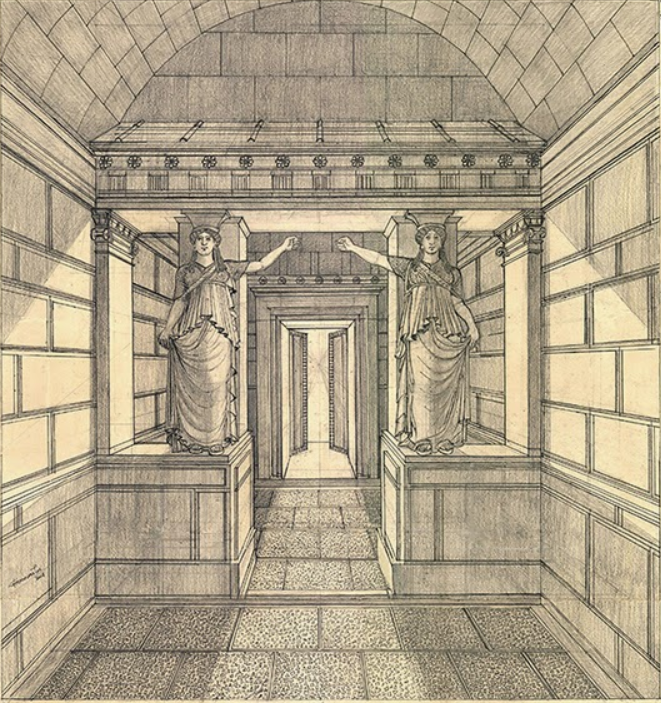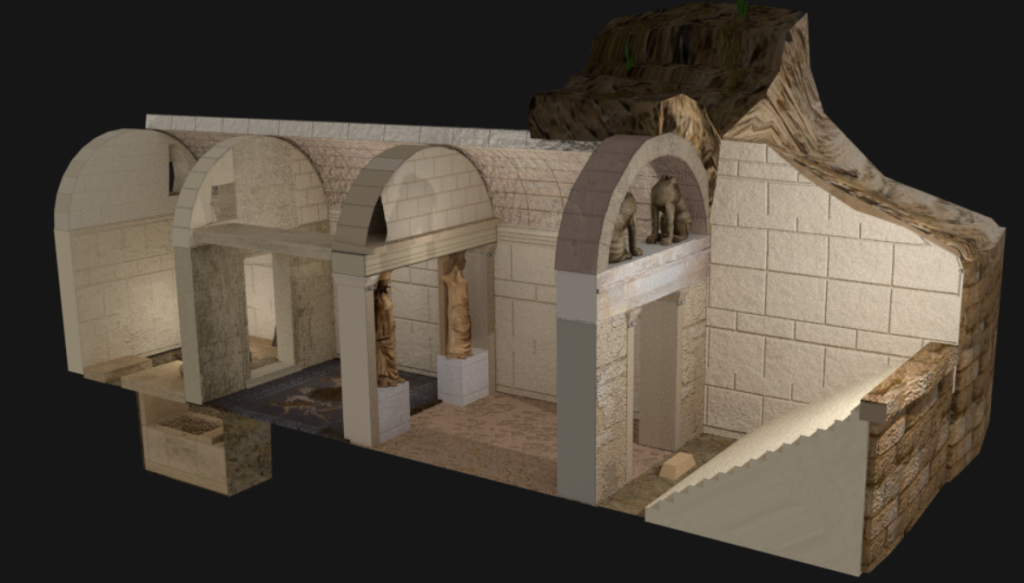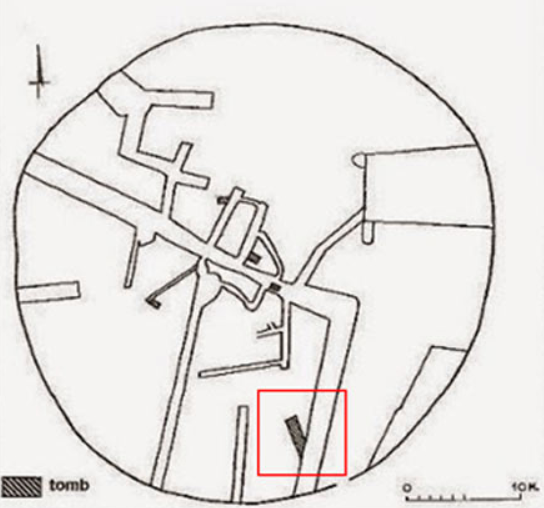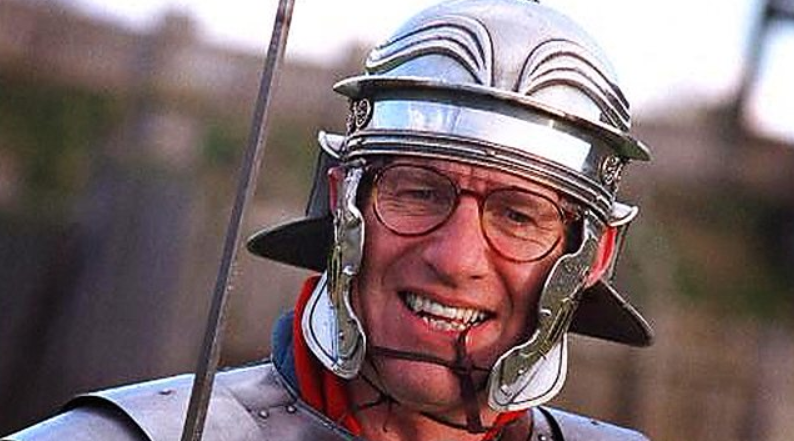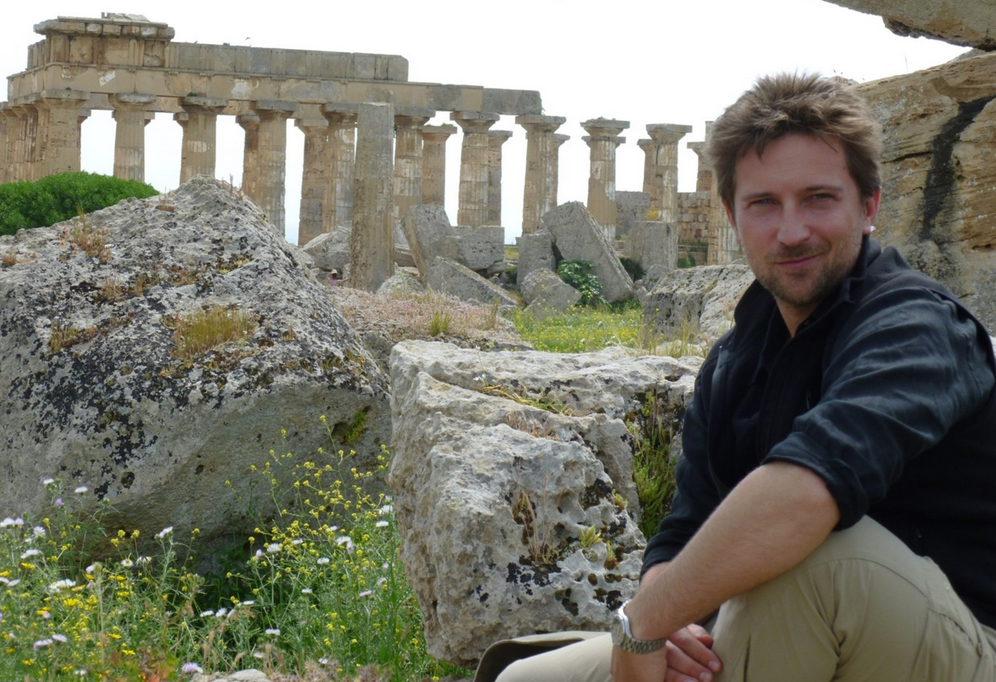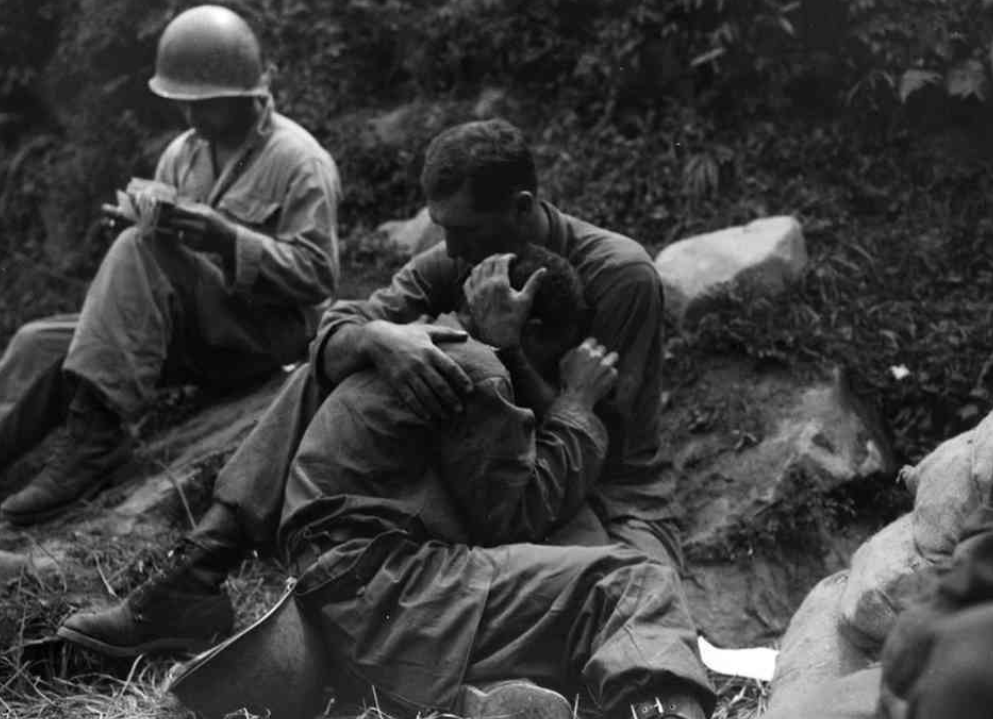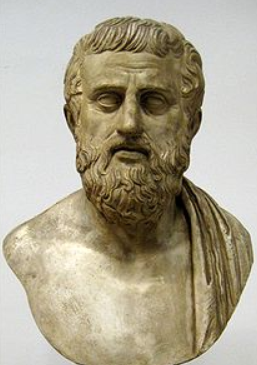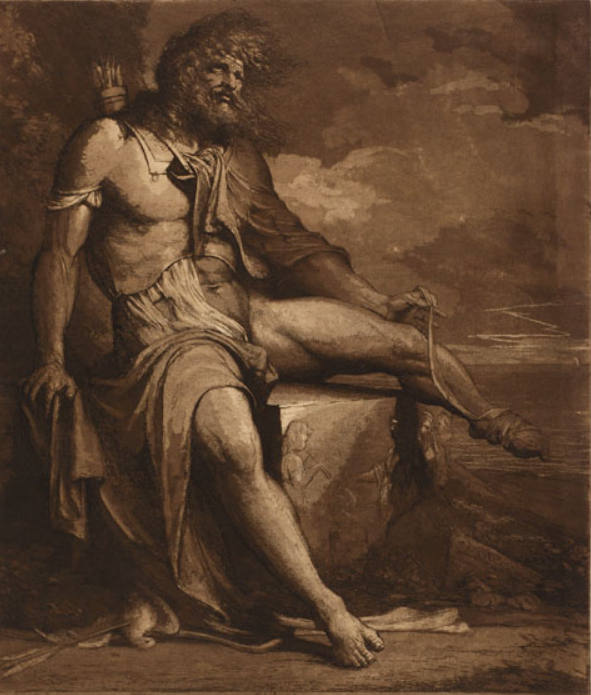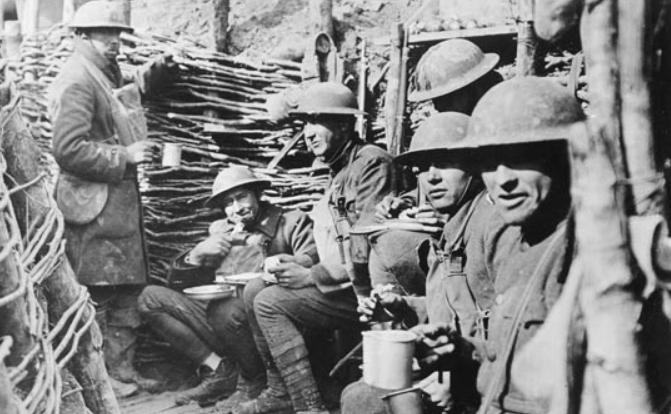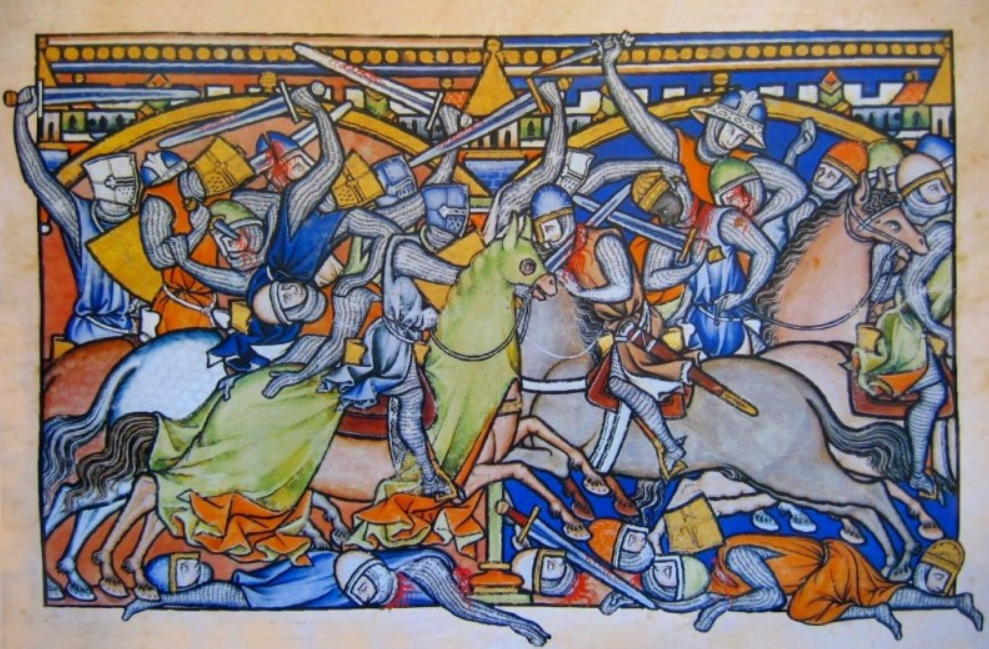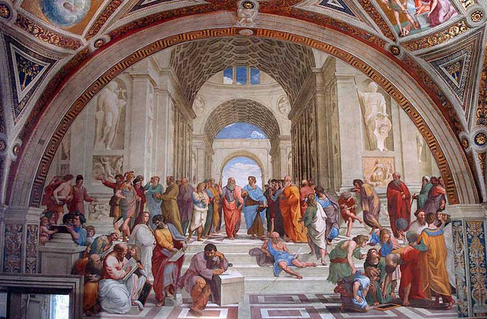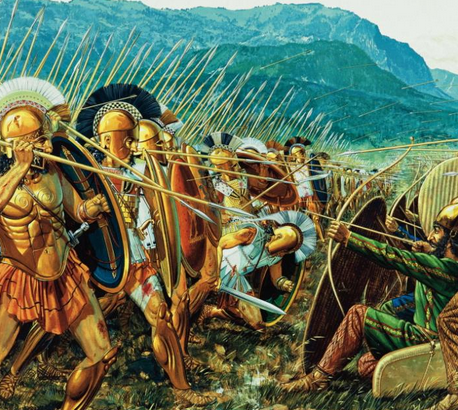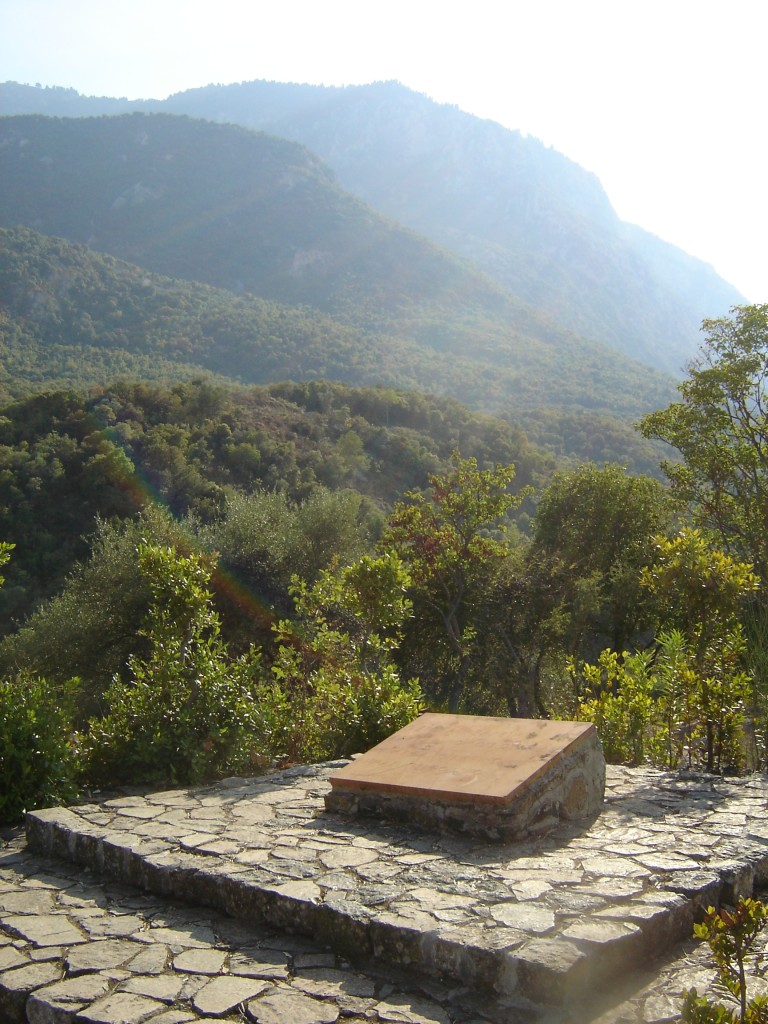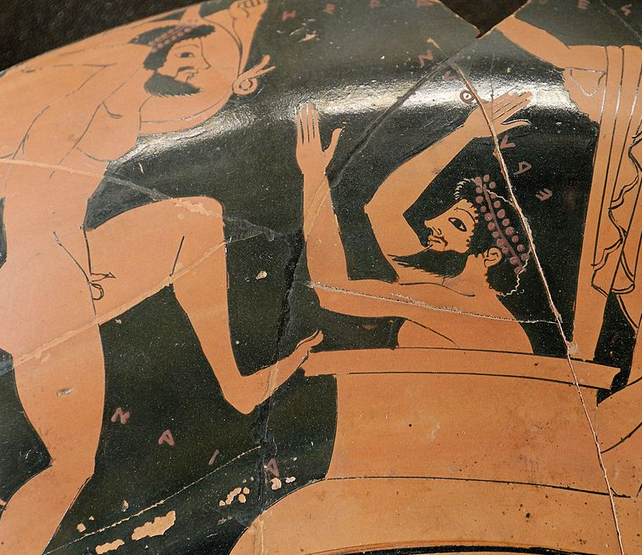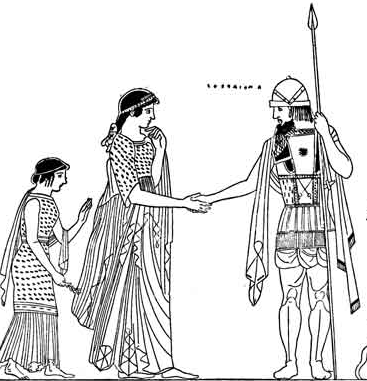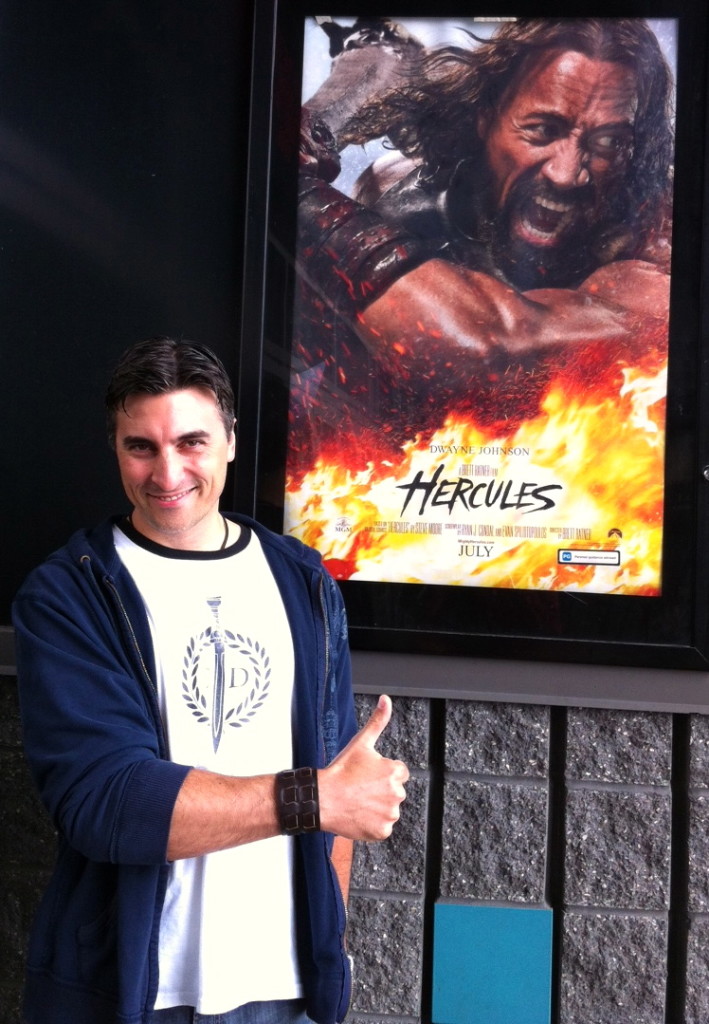ancient Greece
Tiryns: Mycenaean Stronghold and Place of Legend
This week, I wanted to leave behind the sad and depressing subject of the destruction of heritage to write about a site steeped in myth and legend – Tiryns.
“In the south-eastern corner of the plain of Argos, on the west and lowest and flattest of those rocky heights which here form a group, and rise like islands from the marshy plain, at a distance of 8 stadia, or about 1500 m. from the Gulf of Argos, lay the prehistoric citadel of Tiryns, now called Palaeocastron.” (Heinrich Schliemann; Tiryns; 1885)
I visited the site with family during the summer of 2002. It was a scorcher of a day and the cicadas were whirring full force by 9 a.m. Luckily, the heat meant that the place was devoid of visitors – the perfect time to explore.
Tiryns is one of those sites that you likely know about if you’ve studied classics, mythology or archaeology. Most people haven’t heard about it. It lies in the broad Argive plain, a fenced-in circuit wall along the road between Nafplio and Argos itself, surrounded by orange and olive groves.
At first glance, there is no hint that Tiryns was one of the major Mycenaean power centres of the Bronze Age. The cyclopean walls are big, impressive, but there have been times when I drove by and didn’t even notice it. Perhaps that was due to the madness of driving in Greece.
When we got out of the car, the hot wind whipped across the plain to envelope us and, once we paid our entrance fee at the small kiosk, it seemed to sweep us up the ramp to the citadel, and back in time.
Tiryns is a place of myth and legend. It’s been inhabited since the 7th millennium B.C., but by the Hellenistic and Roman periods, it was already in the death throes of a swift decline. Pausanius visited as a tourist in the 2nd century A.D.
“Going on from here [from Argos to Epidauros] and turning to the right, you come to the ruins of Tiryns… The wall, which is the only part of the ruins still remaining, is a work of the Cyclopes made of unwrought stones, each stone being so big that a pair of mules could not move the smallest from its place to the slightest degree. Long ago small stones were so inserted that each of them binds the large blocks firmly together.” (Pausanias; Description of Greece)
I’ve spoken before about the feel of a place of great antiquity. Tiryns is a truly ancient place.
In mythology, it was founded by Proitos, the brother of Akrisios, King of Argos and father of Danae, the mother of Perseus.
It was said that the walls of Tiryns were built by the Thracian Cyclopes of the ‘bellyhands’ clan before they built the walls of Mycenae and Argos. This is why this style is called ‘cyclopean walls’. They were known as the ‘bellyhands’ because that clan of the Cyclopes were said to have made their living through manual labour.
It would have been a feat of tremendous strength to say the least, as each stone weighs several tons.
The association with Perseus is indirect as he acquired Tiryns after he killed his grandfather, Akrisios, but before he established Mycenae.
One of the most important mythological associations with Tiryns, however, is with Herakles, son of Zeus and Alkmene. The latter was the granddaughter of Perseus.
Let us go back to the time when Eurystheus was king of Mycenae, Tiryns and Argos (Note: Eurystheus was not a king of Athens, as portrayed in the recent film, Hercules.)
According to Apollodorus:
“Now it came to pass that after the battle with the Minyans Hercules was driven mad through the jealousy of Hera and flung his own children, whom he had by Megara, and two children of Iphicles into the fire; wherefore he condemned himself to exile, and was purified by Thespius, and repairing to Delphi he inquired of the god where he should dwell. The Pythian priestess then first called him Hercules, for hitherto he was called Alcides. And she told him to dwell in Tiryns, serving Eurystheus for twelve years and to perform the ten labours imposed on him, and so, she said, when the tasks were accomplished, he would be immortal.”(Apollodorus; Book II)
After Hera drove Herakles mad, causing him to kill his own children, the Oracle at Delphi told the hero that he needed to serve King Eurystheus to atone for his horrible actions.
Herakles settled in Tiryns. His twelve tasks, or Labours, for Eurystheus are legendary and have been depicted in art for centuries throughout the ancient world. You can read a previous post about the triumphs of Herakles HERE.
Admittedly, when I visited Tiryns I had no idea of its associations with Perseus or Herakles. For me, a lot of research is sparked after visiting a site, and as a result, a follow-up visit is certainly in order.
The citadel of Tiryns is about 28 metres high, 280 meters long, and it was built in three stages. In the 12th century B.C. it was destroyed by earthquake and fire but remained an important centre until the 7th century B.C. when it was a cult centre for the worship of Hera, Athena, and Herakles.
The Late Bronze Age (1600-1050 B.C.) was the height of Tiryns’ existence. It’s during this time that the cyclopean walls and most of the fortifications were built.
Today, as in the Bronze Age, one approaches the citadel on the east side. To get to the upper citadel, which was the location of the great megaron and palace, you must walk up a massive ramp that is 47 metres long and 4.70 metres wide. This would have led to the main wooden gates.
Once past the gates, you walk along what was a corridor that led to the Great Gate which was flanked by a tall tower. The Great Gate was almost the size of the famous Lion Gate of Mycenae, and would have proved an imposing structure.
When I was walking along the ramp, looking up at the remains of the massive walls and the tower, I could imagine warriors in bronze, with boar’s tusk helmets, looking down on me, with spears or bows in hand.
Even though the citadel contained a luxurious palace and baths, this would not have been an easy fortress to storm.
Once you attain the top, you find yourself on a level area looking out over the site – the upper, middle and lower citadels.
There is not much left in the way of intact walls when it comes to the palace but you can see the outlines of the many rooms, especially the courtyards and the great megaron where the King of Tiryns held court and had his throne on a raised platform overlooking the central hearth.
Imagine Herakles approaching Eurystheus to ask him what his next labour was to be, in this room. This was the heart of the palace. Other rooms would have included residences, a second megaron and even a bath, the floor of which is made up of a huge monolith.
I was a bit dazed, standing there in the heat, looking on the remains of this site with awe. It’s so very old and the ruins only hint at what was a luxurious, but defensible, palace. And that was just the upper citadel.
The middle citadel, 2 m lower, provided access to the defences and may even have contained a pottery kiln. The lower citadel, which is also surrounded by walls, may have been used as a refuge for the people of Tiryns town on the west side, in times of need.
At one point, when I was looking about the gravelly surface of the court, I spotted tiny bits of pottery. Of course, I bent down to get a closer look and picked up a shard with three black lines painted across it. Before I could contemplate the age of this piece, a loud whistle blew and a site person seemingly emerged from the rocks like an asp hiding from the midday sun. “No touching!” I heard, in heavily accented English.
Good thing she didn’t have a spear or bow.
After leaving the upper citadel, we walked down some steps to what is my favourite part of the site – the east galaria.
This beautiful arched tunnel is still intact, and with the sun shining from above, it was suffused with soft light. I immediately imagined a Mycenaean queen strolling between the light and shadow of this place, or a determined king on his way to a war council, his cloak flapping behind him, bronze-clad guards in his wake.
Such is the power of a site like this to fire the imagination.
Back to the present.
It’s funny, but whenever I find myself fed up with cold winter days where I live, I think back to that scorched but brilliant day at Tiryns, and smile. I feel warmth again. I enjoy the glint of the sun radiating off of the stone, and its sparkle far out in the Gulf of Argos.
This ancient citadel is a welcoming place where history and myth are entwined, comfortable allies. I certainly hope my path leads me there again one day soon.
Thank you for reading.
What is your favourite ancient site with mythological and legendary links?
Let us know in the comments below.
The Links Between History and Mythology – A Guest Post by Luciana Cavallaro
Today I have a special guest on the blog.
Luciana Cavallaro is the author of a series of mythological retellings from the perspectives of some fascinating women in Greek myth.
When I read her book, The Curse of Troy, I knew that I wanted to have her write a guest post for Writing the Past. Luciana has a wonderfully unique style, and she gives these accursed women of Greek myth a voice that you may not have heard before.
So, without further ado, a big welcome to author, Luciana Cavallaro!
First, I’d like to thank Adam for inviting me to be a guest blogger. I’ve been following Adam’s blog for years now and enjoy reading about the Roman history, expansion and legacy they’ve left behind and learning about King Arthur and Medieval England. The latter is not one of my strongest or favourite periods of history, but I do enjoy reading Adam’s articles. I also want to apologise to Adam. He asked me last year to be a guest blogger and at the time I was finishing up my book and then time got away from me.
Let’s get into it
I’m a bit of a fan of mythology, in particular Greek myth, but I’m not an expert or purport to be one. I love the stories, learned a great deal from them and continue to do so. What I particularly enjoy are the links between the myths and historical fact.
Before I get into that, let’s address what mythology is. Here’s a dictionary meaning:
Mythology is a body of myths, especially one associated with a particular culture, person, etc. (Collins Concise Dictionary, 1989)
I prefer Joseph Campbell’s explanation:
There is a mythology that relates you to your nature and to the natural world, of which you’re a part. And there is the mythology that is strictly sociological, linking you to a particular society.
(Interview with Bill Moyers, The Power of Myth, 1986)
Myths are cultural as is history. If one digs (pardon the pun) deep enough, there is a correlation between the story and fact. Let’s take Jason of the Argonauts and his search for the Golden Fleece. In the Republic of Georgia, once annexed by Russia, the fleece of a sheep was used to trap golden grains dug from the river, or placed in the river banks and used in the same way.
Here’s a great article on this: Legend of the Golden Fleece was REAL: Greek myth originated near the Black Sea where miners used sheepskin to filter gold from mountain streams, geologists claim
I also watched a documentary of an Australian photo journalist who was trying to find the cities Alexander the Great founded in the Middle East. He watched Afghan miners use this technique to find gold in the riverbeds 4000 years on.
The journey from Jason’s home of Iolkos (Thessaly) to Georgia some distance away was dangerous. It is possible the story of the skills and craftsmanship of the Colchians who developed smelting and casting metals for agriculture and making jewellery found their way to Greece. This was something the ancient Greeks wanted, and the gold.

“Jason Pelias Louvre K127” by Underworld Painter – Marie-Lan Nguyen (2006) Licensed under Public Domain via Wikimedia Commons
Another is the great story of Troy in Homer’s Iliad, which is a famous tourist site, and I did get to see. It is massive just as Homer stated. The lofty walls the Greeks couldn’t penetrate are there, and what is left is tall and slopes inwards. Hittite texts confirmed the site of Ilios, which they called Wilusa and identified Alaksandu/Alexander as one of the city’s kings. Alexander was the Greeks’ name for Paris. The texts also mention an invading force from the west, Ahhiyawa, that closely resembles Homer’s name for the Greeks, Achaeans. What historians have concluded is Homer’s story is a collective memory of the various invasions on Troy over centuries and its eventual downfall.
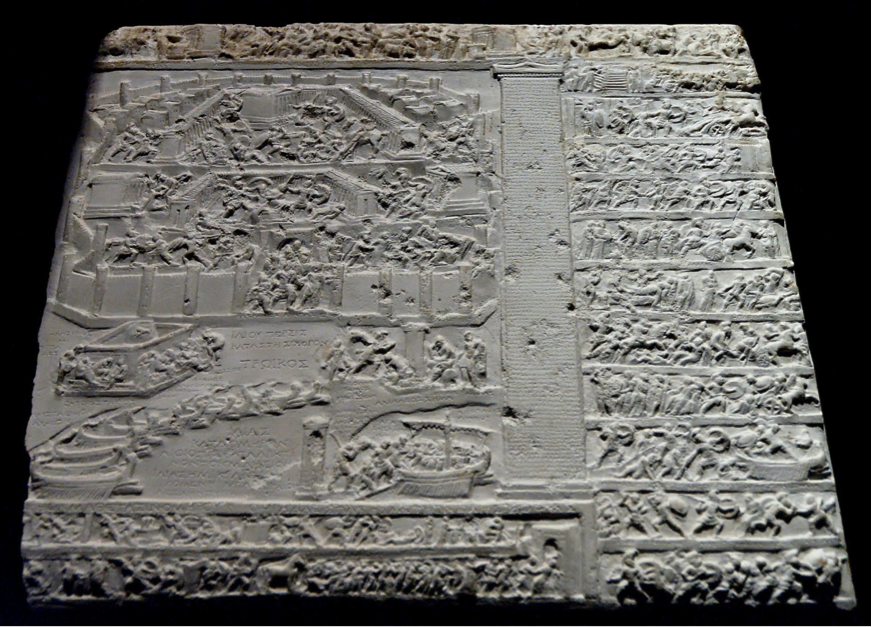
Hittite tablet recounting the events of the fall of Troy by Unknown – Jastrow (2006). Licensed under Public Domain via Wikimedia Commons
The fact that the site of Troy exists, as does Mycenae, home of King Agamemnon, does give credence to the mythologies. But like all stories, you can’t let facts get in the way of telling a good tale.
I do believe the more we delve into the myths, the more facts we’ll find in history. As with the current series I’m writing on my blog Eternal Atlantis, on the Atlantis myth, I believe such a place did exist. Like Homer’s Iliad, the enduring legend of Atlantis is a conglomeration of memories and oral histories to explain the rise and fall of a mighty empire. Look through the timeline of history and you will find many periods of great empires and their demise, either through war or a natural disaster.

Kircher’s 1675 map of the world after the Great Flood. The location of Atlantis is marked in the Atlantic Ocean. (Print Collector/Getty Images)
Myths, like all stories, have morals and a message to relate. One day, I hope we will be smarter and take heed of these so we don’t keep repeating these transgressions. In a hundred or thousand years to come, people will question our mythology. What mythology will we leave behind?
I’d love to know your thoughts on the veracity of myths in our history.
I’d like to thank Luciana for taking the time to write this fascinating post for us. I’m so jealous of her trip to Troy, a place which I have wanted to visit for a long time. Ah, someday…
Mythology is truly fascinating, and there is a lifetime and more of stories for us to enjoy and learn from.
If you enjoy mythology as much as I do, you’ll definitely want to check out Luciana’s book, Accursed Women, or pick up one of the many short stories she has out. She also has a new book entitled Search for the Golden Serpent which I’m looking forward to reading.
Also, be sure to sign up for her E-bulletin so that you can receive her very interesting blog posts to your e-mail. By signing up, you’ll receive The Curse of Troy for FREE!
I always look forward to reading her posts as they are a fantastic escape from the everyday. The blog series on Atlantis is titantic!
Please leave any questions or comments for Luciana in the comments below, and, once again, thank you for reading…
Quiet and Contemplative – Essentials for Writing Historical Fiction
There is a truth which I have forgotten lately. With the day-to-day workings of my modern, connected life, I’ve been missing out on something essential, something that in the past has always helped me to nurture my creativity, and better my historical fiction. What is it?
Quiet.
Yes. That illusive modern-day grail, that has the power to slow us down, to help us think, to regroup and empower ourselves.
Now that I write that, it really does seem obvious, not ground-breaking at all. But it is, and I’ve found that without taking some calm time to contemplate the past, my fiction suffers.
Like many, I suspect, my days are pretty full. All the tasks and to dos that are swirling around me feel more numerous at times than the number of arrows raining down on the Spartans at Thermopylae, blotting out the sun.
Now, I’m sure there are a great many people who have much busier days. We all have our own threshold.
There is a distinct lack of quiet time, and by this, I mean time in which I sit away from a computer or device, not doing any sort of task, and actually think about history and historic places, the things that I love and that fascinate me.
Of course, I think about history throughout the day, but contemplation of the sand seas of Roman North Africa, or the city streets of the Forum Romanum doesn’t come as easily on a crowded subway car when one is trying to ignore some anonymous person’s flatulence. So gross.
Lately, I’ve ‘forced’ myself to set aside all computers and devices when I have some spare moments (even 5 minutes!) in favour of sitting down with one of my favourite, big, coffee table books about ancient Greece and Rome, or the Middle Ages.
I’ll look at anything from architecture to landscapes, artifacts and archaeological sites, to artistic recreations of places and everyday life in the past. It all helps, it all inspires.
If I can sit in a sunny spot with a cup of coffee and some of my favourite soundtrack music on, even better.
I’ve found, or rather, I’ve remembered, that when sit quietly and allow my mind to wander calmly through some part of history, I am more in touch with it. When I do that, I am better able to bring that world to life when I’m writing about it.
For me, historical fiction is highly dependent on setting.
You can have the most wonderful three-dimensional characters ever, but if you don’t have the historical setting to transport the reader, or place those characters firmly in the past, then your book could be taking place at any time in history.
I don’t know about you, but when I pick a work of historical fiction, I pick it largely for the period. If I’m not transported to that period in history, I’m disappointed.
I’ve had a lot of readers tell me that they loved my books because they learned a lot about the ancient world, or about the Roman Empire. That makes me very happy, as it has always been my goal to make history interesting and entertaining.
Without having taken the time to be Quiet, and to contemplate the physical world of those distant eras, I know I would not have managed to pull it off.
I’d like to share with you a very special book about the Roman Empire that has given me no end of inspiration. It is Splendours of the Roman World, by Anna Maria Liberati and Mario Bourbon.
This book was a gift from my parents who bought it at the Roman Bath museum, in Bath. Ever since I first flipped through it, I was rapt, sucked into the ancient world.
I have many other books that do this for me, but this is one that I continue to go back to again and again.
Are there any books that you like to flip through at a leisurely pace, or that inspire you and fire your view of an historic period?
Or, do have a favourite work of historical fiction that you felt really did a good job of transporting you as a reader?
Share your favourite book titles in the comments below.
While you do that, I’m going to step away from the computer, sit quietly, and immerse myself in the ancient world.
Thanks for reading…
Humour in the Ancient World
An Abderite saw a eunuch and asked him how many kids he had. When that guy said that he didn’t have the balls, so as to be able to have children, the Abderite asked when he was going to get the balls (Philagelos, #114)
Is that funny to you? A little? Or does it make you scratch your head and wonder if I’ve gone off the deep end?
It’s not my joke, thankfully. In truth, I’m not a very funny person, but I do enjoy a good laugh, as many of us do.
The joke above is actually a Roman joke about 2000 years old. Yes, that old. It’s one of 250-odd jokes in the oldest joke book in the world known as the Philagelos, or ‘The Laughter Lover’. It is thought that this text is a compendium of jokes over several hundred years. The earliest manuscript is thought to date to the 4th or 5th centuries A.D.
Humour in the ancient world is not really something I’ve thought about in my writing and research. If there has ever been humour in my books, it has been a reflection of my own modern perceptions of what humour is, or should be. Otherwise, my modern readers would be left scratching their heads.
A colleague of mine recently shared a CBC interview with eminent classicist and historian Mary Beard on the subject of her book about humour in the Roman world entitled: Laughter in Ancient Rome: On Joking, Tickling, and Cracking Up
The wonderful interview with Mary Beard got me to thinking about this little-thought-of aspect of life in the ancient world.
Here is the sound clip for the interview which runs about 50 minutes.
As I mentioned, I’m not funny, so until recently my idea of humour in the ancient world was partly based on the musical A Funny Thing Happened on the Way to the Forum by the brilliant Stephen Sondheim. The latter is not a completely inaccurate view since the story is based on the farces of the Roman playwright Plautus (251–183 BC). Bawdiness played a large role from the theatre to the marching songs of Rome’s legionaries.
Slap stick comedy was a part of humour in the ancient world, but in the interview Mary Beard has put forth the idea that there are other aspects of ancient humour which we might not, or cannot, understand.
A professional beggar had been letting his girlfriend think that he was rich and of noble birth. Once, when he was getting a handout at the neighbor’s house, he suddenly saw her. He turned around and said: “Have my dinner-clothes sent here.” (Philagelos, #106)
When it comes to many ancient jokes, our cultural and temporal disconnect make them simply ‘not funny’.
Another reason why the humour of some ancient jokes may be lost on us is that perhaps the medieval monks copying these down simply made mistakes or interpreted them incorrectly.
Mary Beard points out that there is no real way to know how ancient people laughed either. This is a bit of a trickier concept to wrap one’s head around. What were ancients’ reactions to laughing? Did they have uncontrollable laughter?
My thought is that yes, maybe our jokes are different from what Roman jokes were, just like how some people find Monty Python funny (I know I do!), while others wonder what the big deal is. I also think that we are perhaps not so different in our physical reactions. For example, there is the quote from Cassius Dio, whom I have used as a source for much of my writing, and who Mary Beard uses as an example.
Here is a portion from the Roman History in which Cassius Dio and other senators are watching Emperor Commodus slay ostriches in the amphitheatre. As we know, Commodus was off his head, and prone to killing whomever he wanted.
This fear was shared by all, by us senators as well as by the rest. And here is another thing that he did to us senators which gave us every reason to look for our death. Having killed an ostrich and cut off his head, he came up to where we were sitting, holding the head in his left hand and in his right hand raising aloft his bloody sword; and though he spoke not a word, yet he wagged his head with a grin, indicating that he would treat us in the same way. And many would indeed have perished by the sword on the spot, for laughing at him (for it was laughter rather than indignation that overcame us), if I had not chewed some laurel leaves, which I got from my garland, myself, and persuaded the others who were sitting near me to do the same, so that in the steady movement of our armies we might conceal the fact that we were laughing. (Cassius Dio, Roman History LXXIII)
What a sight that must have been! Even though it meant certain death, Dio and the other senators had to chew laurels so as not to give in to what was presumably an urge to laugh hysterically.
A young man said to his libido-driven wife: “What should we do, darling? Eat or have sex?” And she replied: “You can choose. But there’s not a crumb in the house.” (Philagelos, #244)
Bawdiness creeps in all the time in ancient humour, and why not? Everyone (well almost everyone) likes a sex joke. If you peruse the jokes in the Philagelos, you’ll see that many of them have to do with sex.
And this didn’t just apply to the Romans. The ancient Greeks found sex and humour to be comfortable bedfellows (no pun intended).
I remember going to an evening performance of Aristophanes’ Lysistrata at the ancient theatre of Epidaurus one summer night. It was a beautiful setting with the mountains as a backdrop to the ancient odeon, the sun setting orange and red, and then a great canopy of silver stars in the sky above.
Lysistrata is a play about a woman’s determination to stop the Peloponnesian War by withholding sex from her husband, and getting all other women to do the same. It seemed quite the political statement on the waste and futility of war, as well as ancient gender issues.
But then the men, who had not had sex for a long time, came prancing about the stage with giant, bulbous phalluses dangling between their legs, moaning with the pain of their ancient world blue balls. Some of the crowd roared with laughter, others tittered in embarrassment, and still others sat stalk still like the statues in the site museum.
Perhaps that is the point? Maybe in ancient times, just as today, some jokes were funny to some and not to others? Are we that different from our ancient Roman and Greek counterparts?
Ms. Beard points out that ancient writers like Cicero speak of the different types of humour. There is derision (laughing at others), puns (word play), incongruity (pairing of opposites), and humour as a release from tension.
An incompetent astrologer cast a boy’s horoscope and said: “He will be a lawyer, then a city-official, then a governor.” But when this child died, the mother confronted the astrologer: “He’s dead — the one you said was going to be a lawyer and an official and a governor.” “By his holy memory,” he replied, “if he had lived, he would have been all of those things!” (Philgelos, #202)
Maybe we’re not so different after all?
She also mentions tickling, and how Romans are said to have felt ticklish on their lips, a part that has been highly erotized today. Prostitutes, she says, were said to be ‘big laughers’.
Hmmm.
I don’t frequent brothels, but perhaps that is as true today as it was 1500 years ago.
This is a much bigger topic than I had expected. It’s fascinating to think of laughter in an ancient context.
Do I find ancient jokes funnier than before? Not really, though I do find they reveal something more of Roman society.
Will I start inserting ancient jokes in my writing?
No, unless I too find it funny.
The reason for this is that when an author writes humour in historical fiction, if he or she wants his or her audience to actually find it funny, it will need to resonate with our modern-day humour and ways of laughter. The audience has to recognize it to an extent. That doesn’t mean a joke that modern readers will understand can’t be cloaked in ancient garb.
At the end of the day, perhaps it is as simple as this: there will always be crap jokes, but it is the funny ones that stand out, that will tickle you and set you to laughing.
Thank you for reading.
I’d love to hear what your thoughts are in the comments below.
Would you like to see ancient jokes transferred to your historical fiction exactly as they are? Or should humour be written in a way that a modern audience can understand it?
Lastly, if you have looked at the Philagelos (Click HERE to read it!), which joke is your favourite?
The Amphipolis Tomb – The Discoveries and Theories
Over the past months, the on-line world has been set ablaze with Greek fire.
By that, I mean that the talk in ancient history and archaeology circles has been dominated by one of the most exciting discoveries in recent memory – The Amphipolis Tomb.
You may have heard about this ‘Alexander the Great era’ tomb in media around the world. The Rumours and theories about what it contains are as thick and the sarrissae of a Macedonian phalanx.
So, I thought I would use this post to go over the various finds, and some of the theories we’ve seen thus far. But first, here’s a video of an aerial view of the site of the Amphipolis tomb.
Before we get into the finds, we should look at where Amphipolis is.
Amphipolis is located 100 kms east of the northern Greek city of Thassaloniki, along the river Strymon. This is the region of Thrace.
The settlement was founded by the Athenians circa 437 B.C. near some gold and silver mines in the hills. It was conquered by Philip of Macedon in the year 357 B.C. and then, during the reign of Alexander the Great, was a major naval base.
The first major excavations at Amphipolis were undertaken in 1964, but it is the current excavation of the tomb, begun in 2012, that has grabbed the attention of the world by getting into the mound and revealing some of its treasures.
The Amphipolis tomb dates to the late 4th century B.C., the Hellenistic era, and is about 2,300 years old.
This is the largest burial monument ever discovered in Greece, and archaeologists have only just scratched the surface.
What have they found? Let’s make our way into the tomb in the order of discoveries.
The Lion of Amphipolis
The first discovery was actually not within the tomb, but nearby, and was discovered in 1912.
The Lion of Amphipolis is a 4th century B.C. sculpture that was first found by Greek soldiers around Amphipolis during the Second Balkan War, with more pieces of the lion being found by British troops during World War I.
For some time, archaeologists believed this was a tomb sculpture or monument to Alexander the Great’s admiral, Laomedon of Mytilene.
It is now believed that the Lion was actually located on top of the Amphipolis tomb which would have looked impressive and been seen from miles around, including from the sea.
The lion is over 4 meters tall, but with the base it sits on, it reaches over 8 meters in height.
The question is, what lay beneath the muscular body of this titanic lion?
The Wall
One of the most amazing things about the tomb is the sheer size of it. This monument was meant to impress!
The tomb itself has a circular wall that is 500 meters all the way around, and 3 meters high. It’s made of marble and limestone which is in remarkably excellent condition.
The archaeologists have excavated the earth around the entire monument, and from the pictures in the trench it is possible to get a sense of the size of this place.
Next, the entrance to the tomb was discovered where a wide staircase leads down to the next exciting discovery.
The Sphinxes
Above the entrance to the tomb stand two Sphinxes facing each other. To me this is a truly haunting image. Imagine entering this subterranean world beneath the gaze of these two guardians? It would be something to send a chill down one’s spine as you entered the realm of the dead.
The Sphinxes are both 2 meters tall, and seem to have been very detailed in their rendering. You can see the heavily-muscled bodies of these ancient creatures, whose heads and wings are sadly broken off.
They stand above a frescoed entrance that is 1.67 meters wide, and without a door.
Once you pass beneath the guardians, you find yourself in the first chamber which has a unique floor, barrel-vaulted roof, and smooth marble panelling on the walls either side.
But as archaeologists moved forward, ever-so-carefully, they found even more wonders…
The Caryatids
A caryatid is a sculpture of a female body that is used as an architectural support, a more ornate version of a regular column. The most famous are probably the caryatids from the Erechtheion on the Acropolis in Athens, sometimes called the ‘porch of the maidens’.
As excavators removed the dirt from the rest of the first chamber they were met by two tall, beautiful, skillfully-carved Caryatids flanking the entrance to the second chamber.
When I say they are beautiful, I mean it. These maids are lovely, solemn, and awe-inspiring, from their carved platform sandals, to their flowing robes, the wonderfully ornate braids of their long hair, and the serene beauty of their faces.
It must have been amazing to uncover these!
And they are not small, either. The Caryatids at Amphipolis are 2.27 meters (7.5 feet) tall, but if you include the bases on which they stand, they tower over visitors at about 3.66 meters (12 feet).
As we move into the second chamber, we come to even more ornamentation, and this time, it is something that hints at who the tomb might belong to.
The Mosaic
As the dirt from the second chamber was painstakingly removed, and the floor reached, archaeologists were confronted with a thing of beauty.
As it turned out, the entire floor of the second chamber is covered by a mosaic that is 3 meters wide and 4.5 meters long.
As you can see from the picture, it is a work of magnificent craftsmanship. The colours, even thousands of years later, are still brilliant.
The scene depicts the abduction of Persephone by Hades (Pluto), the Lord of the Underworld. He carries the reluctant girl away in his chariot for her annual sojourn in his realm beneath the earth. Leading the way is the god Hermes, whose traditional role was to lead souls to the Underworld. You can see the caduceus in Hermes’ left hand. The entire scene is surrounded by a Greek Key (meander) and wave motif.
Now, the exciting thing about this mosaic is related to one of the theories we will discuss shortly. A hint however, is in the rendering of the faces of the three people represented.
Another discovery in chamber two can be found on the walls.
As you can see, there are faint hints of frescoes portraying a man, a woman, and what appears to be a bull. Perhaps a sacrifice scene?
Let’s hope the restoration teams can give us a clearer glimpse someday soon.
And now, let us have a brief look at the most recent discovery in the Amphipolis tomb.
The Human Remains
Who is buried in the Amphipolis tomb? Who was it built for?
These are the questions that dominate, and when archaeologists moved into the third chamber they came one step closer to possible answers.
Beyond what were a pair of marble doors (fallen) on tracks in the floor, they have found a chamber with a burial in the floor with human bones. However, to complicate things, there were more bones and cremated remains in the soil on top of the burial.
Due to earthquakes, and early grave robbers, the remains, and perhaps any grave goods that were present have been scattered or looted.
Putting the pieces of this particular puzzle together is a painstaking process that will take a lot of time and patience.
For the moment, it seems that in chamber 3 of the Amphipolis tomb, there are the remains of five individuals: a woman over 60 years of age (buried in the sarcophagus beneath the floor), two men between the ages of 35 and 45, a newborn child, and a cremated adult.
In total, mixed up in over 8 feet of soil, archaeologists have recovered 550 pieces of human bone. The question of who the bones belong to is something we will have to wait a long time to answer.
The Theories
There have been a lot of wild theories about who this tomb was intended for. Obviously, it was not for just one person.
Many trigger-happy theorists and philhellenes have immediately jumped to the conclusion that the Amphipolis tomb could only belong to Alexander the Great.
One reason for this guess (or hope?) is the immense size of the monument; remember, this is the biggest burial in Greece. What better monument for one of the greatest generals and conquerors the world has ever known?
Another reason is that the Amphipolis tomb is thought to have been designed by Alexander’s personal architect, the man who helped build Alexandria, and who used Egyptian measurements for Amphipolis: Dinocrates of Rhodes.
Dinocrates helped Alexander plan Alexandria, the ideal city, and designed the reconstruction of the Temple of Artemis at Ephesus, one of the seven wonders of the ancient world. For some people, this is further proof that Amphipolis was meant for Alexander himself. Who else but his favourite architect would design his tomb?
The problem with this theory is that Alexander the Great was buried in Alexandria, in Egypt, the city that he had designed. It is pretty well-documented that his body was taken there to be entombed, under the care of Ptolemy who ruled in Egypt after Alexander’s death.
Now, if there were plans to move the body, or steal it, who can say? (That’s the author in me throwing a log on the fire!) Which of the Companions would not want to be the custodian of the immortal conqueror’s remains?
As for Dinocrates, he would have needed to find work after the death of his patron. If he was Alexander’s favoured architect, he would have been in high demand, no? Perhaps he was engaged by someone in Macedonia to build Amphipolis and brought with him his knowledge from Egypt.
However much people wish it, at this point, it seems doubtful that Amphipolis holds the remains of Alexander the Great.
The next theory may be more plausible, and this is where the mosaic comes in.
If you look at the mosaic, the faces of Hermes, Hades, and Persephone do look a little familiar.
Some people believe that in looking at this mosaic, we are in fact looking at likenesses of a young Alexander (Hermes), Philip of Macedon (Hades), and Alexander’s mother, Olympias (Persephone). Is this a royal family portrait?
We know that Philip was buried in the royal tombs at Vergina, and recently his remains were positively identified.
When the mosaic was discovered, some scholars began exploring the possibility then that Amphipolis may have been the tomb of either Olympias, or Roxana, Alexander’s Bactrian wife and mother of his son.
Could the Persephone in the mosaic be either Olympias or Roxana?
It is a tantalizing theory, to be sure. And when this theory came about, they had not yet discovered the remains in chamber 3, those of the woman in her sixties, and an infant child.
Still, it’s hard to say. Roxana and her son did return to Greece under the ‘protection’ of Cassander, one of Alexander’s generals, and certainly, Olympias would have had an interest in being close to and protecting her grandson and daughter-in-law.
Unfortunately, Cassander was not the kindest person and, according to the sources, he had Olympias executed in 316 B.C., and later ordered the murder of Roxana and her son in 310 B.C.
Now, the remains of the woman in chamber 3 are too old to be those of Roxana, and those of the infant are perhaps too young to be Alexander’s son. However, it remains plausible that the woman who was buried in the sarcophagus beneath the floor could be Olympias herself.
It will take some time before we know, but the mosaic and the age of the female skeleton (about 60 years), which was about Olympias’ age at her death, are the best leads thus far.
But there are arguments against even that – Would the Macedonians build such a monument to a woman? Would Cassander so honour a woman whom he had had murdered, with such a monument?
Confusing the theories further is one that the two male skeletons may in fact be Cassander’s sons. Analysis will need to be done to see if they are related, but if they are, why would they be buried with Olympias? Were the bones all separate and then dumped all together by the ancient looters?
For me, one telling thing is also the size of the three excavated chambers compared to the rest of the monument. When you look at the area these initial excavations have covered, it is but a small portion of the entire tomb.
With some initial geophysical survey results showing other possibly man-made areas within the hill, one has to wonder if the main occupant of the Amphipolis tomb has even been found yet. Perhaps Cassander himself is buried in some grand chamber filled with art and riches from the East, an afterlife monument to match the ego and ambition which he was apparently in possession of? Perhaps he did bury Olympias, a descendant of Achilles, out of duty to Alexander? Who knows…
Unfortunately, there are far more questions and dead ends than there are answers.
Isn’t that exciting?
Only the archaeology can tell us what we need with any certainty, but that takes time and patience if it is to be done properly.
Those proponents of sensationalist theories on the Web might not like this waiting game, but for me, as an historian and archaeologist, it is well worth the wait. When the answers finally do come, the author in me will be ready and waiting.
What do you think about the Amphipolis tomb? Tell us your own theories and ideas in the comments below!
Thank you for reading.
If you want to take a 3D tour of the tomb thus far, have a look at the video below.
Roaming the Past – Documentaries to Fire Your Passion for History
I don’t know about you, but in this post-holiday time of the year I’m feeling a bit down.
This past week, like many I suspect, I went back to my small square-of-a-cubicle at my day job to get on with ‘regular work’.
That’s always tough, and, despite hitting the weights, yoga, meditation, going to see the new Hobbit movie, and all other manner of uplifting activities, fighting those back-to-work doldrums can make you feel like a lone centurion facing down a Parthian cavalry charge.
But, as ever, there is hope and enlightenment to be found in history.
One thing that I’ve always found is that getting lost in your favourite period of history can wipe out the New Year blues and make you feel like you have some reinforcements at your back.
One way in which I do this is to watch ancient and medieval history documentaries. The combination of knowledge, travel log, archaeological discovery, and ancient innovation always fills a void and reignites my passion for history. And the human stories behind the history never fail to make that Parthian cavalry charge feel smaller and more manageable.
Today I wanted to share with you some of my very favourite documentary series to help temper your own version of cubicle-itis, and get you through the next few weeks as we step into the jaws of Winter (at least in the northern hemisphere).
As with all of these shows, much hangs on the presenter.
Remember, we’re dealing with history here, and most people don’t have very fond memories of their school history classes. Documentaries are dynamic school rooms and it all hangs on the teacher/presenter.
I can’t stand it when a television presenter is overly academic, snooty, blustery, or arrogant. The show should always be about the subject matter, not the host’s ego.
And so, the following shows are on my list not only because of the fascinating topics, but also for the quality of the hosts, their respect and passion for the subject matter.
Michael Wood
For me, Michael Wood has presented some of the most fascinating documentary series since the late 70s. His In Search of series covers everything from the Myths and Heroes, to the Dark Ages, Anglo-Saxon England, and Shakespeare. However, the most fascinating of this series, for me, and for many archaeologists I know, is the six-part In Search of the Trojan War.
Click here for the direct link.
I highly recommend this series. It’s not just about the Trojan War itself, but the Bronze Age in general. You’ll even learn about the Trojans, the Greeks, and the Hittites!
My absolute favourite Michael Wood documentary, however, is his magnificent series entitled In the Footsteps of Alexander the Great.
In this three-part series, we journey with Michael along the entire route taken by Alexander’s army all the way from Macedon and Greece, to Tyre and Egypt, through war zones controlled by the Taliban to the Hindu Kush on into India and back. There are times when Wood was in danger too, but he is intrepid and curious, and you really get a feel for what the journey might have been like, visiting landscapes which few people will ever see in person.
At the time of filming, Wood was unable to visit the battlefield of Gaugamela, but after the second Iraq war, he returned to the area to film a follow-up documentary called Alexander’s Greatest Battle which is also well worth a look.
If you watch any of these videos, and have an interest in Alexander the Great, In the Footsteps of Alexander the Great is the one I recommend you watch. Here is the long trailer for it:
Click here for the direct link.
Bettany Hughes
Next up we have another British historian and broadcaster whose list of documentary credits is just as astounding as Michael Wood’s, perhaps even more varied.
Bettany Hughes has done documentaries on ancient Egypt, Greece, and Rome, and she’s looked at Helen of Troy and Nefertiti, Atlantis, ancient engineering, Democracy, and sex in the ancient world.
She has that passion that is so essential to teaching history, and she doesn’t sugar-coat the past. In fact, she gets down to the nitty-gritty, dirty details, and can tear down with style the romantic images that cloud our view of the past; her documentary Athens: The Dawn of Democracy is one such show.
Bettany seems to have a truly adventurous spirit too, which is great. Just recently she was tweeting out from modern Georgia and the land of Medea and the Golden Fleece where she was shooting for a new show.
My favourite documentary series that I have seen thus far from Bettany is The Spartans. This three-part series provides a fantastic look at the nature of Spartan society, its past glories, and its downfall. You’ll definitely want to see this one!
Click here for the direct link.
Adam Hart Davis
Our next presenter is probably the jolliest character of the group. He is a scientist, a historian, a broadcaster, and much much more. If you look at the range of his work, you’ll see that he covers a wide range of topics besides history.
The reason I’ve put Adam Hard Davis on this list is because his BBC series, What the Romans did for Us, is the most interesting documentary series I’ve ever seen that looks at the practical side of the Roman world.
In this series, Adam shows us numerous inventions and innovations to come out of the Empire. And the cool thing is that these are all things that we still use in some way, shape or form today.
Did you know that a Roman invented the hamburger? Or that the Romans had invented a fire engine? There are all sorts of wonderful surprises in this fantastic series, hosted by a man who loves what he does and has a child-like curiosity and enthusiasm that is truly contagious. You’ve got to watch this!
Click here for the direct link.
John Romer
Our next documentarian is British Egyptologist, historian, and author, John Romer.
He has done several shows on the ancient world, but the one that introduced me to him remains, for me, his very best.
Watching Seven Wonders of the Ancient World is a wonder-full journey to these magnificent sites that have captivated the human imagination for ages.
Romer does not give us the usual academic tour of these ancient tourist attractions. Rather he gets up close and personal with the ruins, the landscape, and the people who lived in those places. He mesmerizes the viewer with his poetic admiration of everything about these places.
In this series, Romer looks at the hidden corners surrounding the Seven Wonders. He’ll admire the grand design and architecture, but also the fine details of a hidden relief that decorates a forgotten piece of history.
Some people might think of Romer as melodramatic, but I think he is more passionate than anything. He loves ancient culture, history, and the people who created these timeless monuments.
https://www.youtube.com/watch?v=oQmIzJwjgEI
Click here for the direct link.
Michael Scott
This next presenter is relatively new to the history documentary scene compared with those I have mentioned above, but when I first saw one of his shows, I knew he would be an ancient history documentarian who would get a whole new generation of students interested in history.
Michael Scott’s style is cool and interested. He is very knowledgeable, and has great passion for the subject matter he is talking about. Definitely not your typical, dry academic!
His most recent series is called Roman Britain from the Air, which began airing last month. I haven’t seen that yet, but I’m looking forward to checking it out.
Most of his documentaries are about ancient Greece, however, and the one that I wanted to mention here is his three-part series Ancient Greece: The Greatest Show on Earth.
This show was a bit of an eye opener for me. Not having studied ancient Greek theatre, it came as something of a surprise that ancient Greek drama was so closely linked to the birth of Democracy, and that it played such an essential, pivotal role in ancient Greek society.
If you want to learn a lot about ancient Greece, in a fascinating and entertaining way, you should definitely watch Michael Scott’s series. After watching this, you’ll want to get yourself on a plane to Greece as soon as you can!
http://youtu.be/xf9cDKqwhQw?list=PLaGnq8H7GaVLH-dDaUlKHpy-JcMqwmI5F
Click here for the direct link.
Richard Harris
Wait! Richard Harris, the actor? Yes.
My last entry here is not an academic or historian, but he sure was an entertainer, and sometimes larger than life.
One of my primary refuges from the madness of the world is the Arthurian realm, and so I could not offer up this list of blues-chasing documentaries without mentioning my favourite Arthurian documentary.
Many of you may have seen Richard Harris in the first couple of Harry Potter movies as Professor Albus Dumbledore. Personally, I liked him as the Emperor Marcus Aurelius in the movie Gladiator, and King Richard the Lionheart in the movie Robin and Marian. Actually, Richard Harris rarely ever disappointed in any of his film roles over the years of his magnificent career, including as King Arthur in the film version of the musical Camelot.
The latter was the reason he was chosen to host this single documentary on Britain’s most famous hero.
Arthur: King of the Britons came out not long before Richard Harris’ death in 2002. This is a wonderful documentary of this myth, history and archaeological discoveries surrounding the person of Arthur.
Rather than seeking to tear down or dismiss the theories about an historical Arthur, this documentary looks at the real possibilities and evidence for the existence of Arthur. This is not about late medieval knights in shining armour.
This documentary is about the search for the person who may have been the historical Arthur, the Romano-British warlord who held off the Saxons for a brief time in the early sixth century A.D.
What I love about this documentary are the visits to Tintagel Castle, and South Cadbury Castle, as well as the digital recreations of these and other sites. It gives a magnificent perspective of them, and the latest research at the time.
If you missed my post on South Cadbury Castle, click HERE to check it out.
As I mentioned in that post, I had been working as an archaeologist on the dig there, which happened to be during the time of the filming of Arthur: King of the Britons!
Unfortunately (well, sort of unfortunately), I was in Greece when the film crew and Richard Harris showed up at the site. So, I missed meeting the great actor himself – and my dig mates made sure to tell me! However, you can see my dig director, Richard Tabor, on the video, which is pretty cool.
Richard Harris is legend, and so what better actor than one who has played Arthur, to present this documentary. He is cool, captivating, and powerful as he tries to unravel the mythical Arthur, and bring us face-to-face with the Arthur of history.
Click here for the direct link.
So there you have it, a selection of magnificent history documentaries, presented by engaging and knowledgeable hosts, to get you through the winter months.
Let us know in the comments if you do watch some, and which ones you enjoy.
Also, if you have any of your favourite documentaries or hosts you would like to share with everyone here, please do tell us in the comments.
Cheers and thank you for reading!
Remembrance Day: Healing Wounds with Ancient Greek Tragedy
Remembrance Day is here, in Britain, Canada, and other Commonwealth nations. This is the time of year when we pin poppies on our jackets and hats to show that we remember the sacrifices of the men and women who have served their countries in war.
This is a solemn time of year; many people have known folks who have served in one conflict or another. For myself, my grandfather served in WWI as a young man, my other grandfather in the merchant navy in WWII. I have friends and relatives who have served in the more recent conflicts in Afghanistan and Iraq.
Every year, I try to write a special post around Remembrance Day because I feel it is utterly important not to forget. I often write about war and warriors. It’s something that is always at the front of my mind. I haven’t served in the military myself, but I have the utmost respect for those that have and do.
This year is the 100th anniversary of World War I, the conflict that began the wearing of poppies. Hard to believe it‘s been that long since the Battle of Liège, or since the earth shook with shelling and gunfire at Verdun and the Somme.
We remember the dead, and the ultimate sacrifices they have made, we bow our heads to them as the guns salute on November 11th.
But what about the living?
In war, the casualties are monstrous, but there are those who do manage to come home. What about them?
Those are the troops I want us to think about today.
What prompted this was an article that a colleague of mine gave to me to read, an article that has indeed struck a chord.
This article by Wyatt Mason, in Harper’s magazine, is entitled You are not alone across time – Using Sophocles to treat PTSD.
PTSD stands for Post-traumatic Stress Disorder, and it is, perhaps always has been, a bane on the lives of warriors for ages. It was not always acknowledged as many former troops were simply told to ‘suck-it-up’. But there is a higher level of awareness now, with a variety of treatments being sought by, or offered to, veterans.
In his article mentioned above, Wyatt Mason writes about a unique theatre group called Outside the Wire, and their program ‘Theatre of War’.
The man behind Theatre of War is Bryan Doerries. He has been studying and translating ancient Greek dramas for years.
What is Theatre of War? Using ancient Greek tragedies, particularly Ajax and Philoctetes by Sophocles, Doerries and a small group of rotating actors travel to military bases and hospitals around the world to perform readings of these plays.
There are no stages, props, or pageantry, just Doerries and about three actors sitting at a table. You might think this would be boring, and so might the troops who were ‘voluntold’ to go. But one cannot underestimate the language of Sophocles, the message, and the powerful delivery of the actors.
After attending these ‘performances’, veteran troops come forward to say that they completely relate to the pain of the warrior-characters in these plays, that they do not feel alone. These performances have been helping troops with PTSD with their healing.
Before we go further, here are a few statistics from the article to put things in perspective.
The number of U.S. soldiers who are committing suicide is at an unprecedented level with nearly one per day among those on active duty, and one per hour among veterans. The number is something like 8,000 a year at the moment.
When I read those numbers, my jaw dropped. It seems like there is no heroic return for many of our troops, no ticker-tape parade. It seems more likely that reintegration with civilian society may be more difficult and lonely than war itself.
In 2008, Doerries’ group received $3.7 million from the Pentagon to tour military installations around the world and they have staged more than 250 shows for 50,000 military personnel.
But what is it about Sophocles’ plays that modern troops relate to so much? What leaves these men and women in tears at the end of each performance?
One thing that the article highlighted for me, and of which I was not aware before, is that Sophocles himself was a warrior and commander, his father an Attic amour-maker. Sophocles had lived through the Greek victories over the Persians at Marathon and Salamis, and then served in the bloody years of the Peloponnesian War when the Greeks tore each other apart.
These were deeply traumatic times.
What hadn’t really clicked for me before reading this article was that with military service in Athens being compulsory among men, most of Sophocles’ audience would have been soldiers and veterans of bloody conflicts.
Sophocles spoke to his audience, he addressed the costs of war, the trauma of battle, the grief and rage that lingered long after the laurel wreaths had been handed-out, and the praise of one’s comrades had ceased.
Theatre of War mostly performs two plays for military audiences – Ajax and Philoctetes.
In Greek history/legend, Ajax was one of the greatest of the Greek warriors during the Trojan War. He was a good friend of Achilles, had won numerous battles for the Greeks, and survived one-on-one combat with the greatest of Troy’s heroes, Hector. Ajax inspired his brothers-in-arms.
But even the mighty fall, it seems. In Sophocles’ play, after nine years of fighting on foreign shores, Ajax, who carried Achilles’ body from the battlefield, has a disagreement with Odysseus about who should get Achilles’ god-made armour. Agamemnon and Menelaus decide to award the honour to Odysseus and this insult sends Ajax into a rage. He swears he will kill the sons of Atreus and Odysseus and any others who have insulted him.
However, the gods are not on Ajax’s side. Athena drives him mad and he ends up slaughtering a host of animals in his tent, thinking they are his perceived enemies. Tecmessa, Ajax’s slave woman and consort, relays what happened:
As captives bulls and herdsmen’s dogs and sheep,
Of which a part he strangled, others felled
And cleft in twain; others again he lashed,
Treating those beasts like human prisoners.
Then rushing out, he with some phantom talked,
Launching against the sons of Atreus now,
Now ‘gainst Ulysses, ravings void of sense,
Boasting how he had paid their insults home.
Then once more rushing back into the tent,
By slow degrees to his right mind he came.
But when he saw the tent with carnage heaped,
Crying aloud, he smote his head, and then
Flung himself down amid the gory wreck,
And with clenched fingers grasped and tore his hair.
So a long time he sat and spoke no word.
At last, with imprecations terrible
If I refused, he bade me tell him all,
What had befallen and how it came about.
And I, my friends, o’erwhelmed with terror, told
All that I knew of that which he had done.
Thereat he uttered piercing cries of grief,
Such as had never come from him before,
For in loud lamentations to indulge
He ever held a craven weakling’s part,
And, stifling outcries, moaned not loud but deep,
Like the deep roaring of a wounded bull.
But in this plight, prostrate and desperate,
Refusing food and drink, my hero lies
Amidst the mangled bodies, motionless.
That he is brooding on some fell design,
His wails and exclamations plainly show.
But, O kind friends, ’twas to this end I came,
Enter the tent and aid me if ye can;
The words of friends are desperate sorrow’s cure.
(Sophocles, Ajax)
When the clouds of madness are swept from Ajax’s eyes, he is shamed by what he has done and goes into deep depression. I’m guessing that it must be the same for modern troops who come home and are haunted by the things that they have experienced, seen and done.
We must remember that this is one of the greatest warriors in the army, second only to Achilles. He has Tecmessa, and he has a son, he has had honours heaped upon him, and yet he cannot deal with what he has done. The strain of 9 years of war have had their toll.
What now am I to do, since of the gods
I am abhorred, of the Hellenic host
Hated, to Troy and all this land a foe?
Shall I to their own quarrel leave the Kings,
Unmoor, and homeward cross the Aegean wave?
How can I face my father Telamon?
How can he bear to look upon the son
Who comes to him disgraced, without the prize,
When glory’s wreath has circled his own brow?
(Sophocles, Ajax)
Ajax decides he can no longer be among the living, such is his disgrace. He decides to leave his tent, despite Tecmessa’s protestations. Alone outside, on the earth surrounding Troy, he plants his sword in the ground, point upward, and kills himself…
O death, O death, come and thy office do;
Long, where I go, our fellowship will be.
O thou glad daylight, which I now behold,
O sun, that ridest in the firmament,
I greet you, and shall greet you never more.
O light, O sacred soil of my own land,
O my ancestral home, my Salamis,
Famed Athens and my old Athenian mates,
Rivers and springs and plains of Troy, farewell;
Farewell all things in which I lived my life;
‘Tis the last word of Ajax to you all,
When next I speak ’twill be to those below.
(Sophocles, Ajax)
In the video trailer for Theatre of War, which I link to below, you will see various troops coming forward at the end of a performance to talk about their own demons, and how they very much identified with Ajax and the torment he was feeling.
The suicide statistics I mentioned earlier are telling and terrifying, and they align with these emotions which Sophocles expressed through the hero Ajax over 2000 years ago.
It is wondrous, the therapeutic role that culture and the arts have to play. Doerries and the Theatre of War seem to have tapped into this on a visceral level to engage an audience that has been neglected in decades past. According to the article, the purpose is to “reach communities where intense feelings have been suppressed, in hopes of bringing people closer to articulating their suffering.”
From the numbers of troops, from all ranks, who come forward after the performances, Doerries and the Theatre of War are helping.
One has to wonder what else Sophocles might have produced, and to what effect? Only seven of Sophocles’ plays have come down to us. It is reckoned that he actually produced over 100. There’s a thought! What other issues might he have tackled which involved the ancient warrior and those around him?
One of the other plays that has survived is Philoctetes.
Philoctetes, in history/legend was one of the greatest archers in the ancient world. He was also the inheritor of the bow of Herakles, which that tragic hero bequeathed to Philoctetes when he was the only one who would help Herakles to light his funeral pyre. Another great hero who committed suicide.
Philoctetes had joined the expedition to Troy, but when they first arrived on the other side of the Aegean he was bitten by a snake on his foot. The wound festered and stank and Philoctetes was always in unimaginable pain.
But his comrades did not help him. Instead, because he was so loud and disruptive to the sacrifices and morale, they abandoned him on a desolate island to be alone with his pain and torment.
Sophocles’ play is not about a soldier who is driven to suicide, but rather a soldier who is abandoned, whose friends are not there for him when he needs them most.
His former friends do return, however, after 10 years of war. But it is not for him that they return, but for the bow of Herakles, without which it is said the Greeks cannot win against the Trojans. Odysseus comes to Philoctetes with Neoptolemus, the son of Achilles, to get the bow.
Naturally, Philoctetes is bitter and might have killed his comrades had not Neoptolemus stolen the bow at Odysseus’ insistence. Philoctetes is distraught at losing his one great possession, the thing which has kept him alive.
O pest, O bane, O of all villainy
Vile masterpiece, what hast thou done to me?
How am I duped? Wretch, hast thou no regard
For the unfortunate, the suppliant?
Thou tak’st my life when thou dost take my bow.
Give it me back, good youth, I do entreat.
O by thy gods, rob me not of my life.
Alas! he answers not, but as resolved
Upon denial, turns away his face.
O havens, headlands, lairs of mountain beasts,
That my companions here have been, O cliffs
Steep-faced, since other audience have I none,
In your familiar presence I complain
Of the wrong done me by Achilles’ son.
Home he did swear to take me, not to Troy.
Against his plighted faith the sacred bow
Of Heracles, the son of Zeus, he steals,
And means to show it to the Argive host.
He fancies that he over strength prevails,
Not seeing that I am a corpse, a shade,
A ghost. Were I myself, he had not gained
The day, nor would now save by treachery…
… I return
To thee disarmed, bereft of sustenance.
Deserted, I shall wither in that cell,
No longer slaying bird or sylvan beast
With yonder bow. Myself shall with my flesh
Now feed the creatures upon which I fed,
And be by my own quarry hunted down.
Thus shall I sadly render blood for blood,
And all through one that seemed to know no wrong.
Curse thee I will not till all hope is fled
Of thy repentance; then accursed die.
(Sophocles, Philoctetes)
Philoctetes has experienced not only pain and torment, but extreme isolation for an extended period of time. If he had been able, he likely would have taken out his anger and rage on his former comrades who had come to get him, those who had abandoned him, mainly Odysseus.
But the Gods decide to favour Philoctetes, and in the legend Herakles himself appears and urges his old friend to return to the war with his bow. This Philoctetes does, and he is one of the men who hides in the Trojan Horse. Sophocles’ play does not go into this, but focusses more on the pain of abandonment and isolation.
How many modern troops, or troops through the ages for that matter, would also have experienced such deep pain in isolation, real and figurative?
How many troops come home to family and friends who, despite the very best of intentions, just don’t understand what they have been through? They can’t understand unless they have been there themselves.
The Theatre of War and its performances of Ajax and Philoctetes seems to provide just what is needed for troops who are alone, and depressed, and dealing with PTSD and all the horrors that that entails – a forum of common understanding.
As I said before, I have not served in the military, so I can only imagine what our troops must be going through. However, there is a level on which I can understand some of this that is perhaps related.
It has to do with the study of history in general. Over the years, when I have felt isolated, out-of-place, depressed, or felt difficult emotion to some extreme, I’ve always found comfort in history, the people, the events.
Somehow, studying and trying to understand history, whatever the period, has always helped me to feel more attuned to the world about me, less lonely. No matter how bad I might have thought things were, how little I might have been understood, history, the past, has always shown me that similar things, more difficult things, have happened to others. I think the knowledge of the challenges people in the past have overcome has always given me strength.
I can’t imagine my life without having studied the past. From those difficult teenage years to the present day, the past has always been my comfort and compass, and helped me to move forward however small my steps.
Perhaps that is what our troops, those veterans of extreme emotion, get from listening to their fellow warriors’ voices out of the past?
Bryan Doerries says it at the end of each of his group’s performances:
“Most importantly, if we had one message to deliver to you, two thousand four hundred years later, it’s simply this: You are not alone across time.”
So, this November 11th, and all through the year, I will ever spare a thought or prayer for warriors past and present. It shouldn’t matter what you think of the kings or politicians who sent them to battle for whatever ends.
If history has taught me anything, it is that warriors through the ages have faced incredible challenges and horrors, and for that they deserve our compassion.
Lest we forget…
Thank you for reading.
If you would like to learn a bit more about the Theatre of War, be sure to visit the website and spread the word. You can also watch the video trailer which shows some of the work they do and includes troops expressing their feelings post-performance. Powerful stuff!
http://youtu.be/RHTVBq5nkj8?list=PLaGnq8H7GaVKuX3GVeir9DZ8W8fDvkUbc
I would also recommend watching some of their performances. Below are clips of both Ajax and Philoctetes being performed by Theatre of War.
https://www.youtube.com/watch?v=Fus0JYIxFtk&index=1&list=PLaGnq8H7GaVKuX3GVeir9DZ8W8fDvkUbc
Click HERE to watch a performance of Ajax by Theatre of War.
Click HERE to watch a performance of Philoctetes by Theatre of War.
Philotimo – An Ancient Word Worth Remembering
Words are fascinating to me. I work with them every day. I read them, hear them, write them, and ponder them. Together they help me to convey the stories that I have within me. They help me to communicate what is inside my head, and hopefully they inspire.
Some words are more powerful than others. Some words teach as well. Some words survive the test of time and the evolution of language. Why is that?
Why do some words get twisted with time so that, inevitably, their meanings are changed or watered down? I’ve studied different languages, but not linguistics, so there is probably an easy answer to this question that I just don’t know.
The other day I was reminded of a word that my eyes had previously glossed over without taking any real notice.
I’m talking about the Greek word, philotimo.
Φιλότιμο
This isn’t just any word. It’s an ideal, a concept, a way of living.
It’s also an ancient word that is said to have no counterpart in any other language.
Philotimo has survived the test of time from ancient Greece to the present day. And to many, it is as powerful as ever.
What does it mean? Very basically, philotimo means ‘love of honour’. But there is so much more to this concept. When Greeks hear this word, the things they are reminded of include a deep love of family, of country, of one’s society and the greater good. It isn’t just about personal honour, because no one person is an island.
Philotimo, at its heart, is about goodness. It’s about selflessness and the force that drives individuals to think about the people and the world around them. It’s no wonder that such a concept came out of the birthplace of democracy.
As a citizen of a polis, a society, it was one’s duty to do what was needed to better, not one’s personal state, but the state of those around you, whether it was your family, your neighbourhood, your city-state, or your country.
A quote that is commonly ascribed to the pre-Socratic philosopher, Thales of Miletus (c. 624-546 B.C.) says this:
“Philotimo to the Greek is like breathing. A Greek is not a Greek without it. He might as well not be alive.”
What I find interesting is that this word, and all the meanings ascribed to it, has been expressed since the 7th century B.C., and perhaps earlier. The importance of philotimo survived the polytheistic world of ancient Greece, through the Roman Empire, and on through the Byzantine and Christian Middle Ages to our modern world.
That’s not to say philotimo is an easy way of life. I suspect that few are able to act with pure philotimo in their lives on a day-to-day basis.
I’m half Greek, and I love Greece and Greek culture, but I think that many Greeks, past and present, do not put enough weight on Thales’ words above. I doubt the sad state of Greece is due to the philotimo of the crooked politicians and greedy bankers who have crippled the country and brought the average hard-working person to the edge of ruin, while they live the good life. Their lack of philotimo has done that to the country.
However, it’s the philotimo of the people that will get them through the trials they are currently facing. I don’t usually talk politics here, but it seems apt in this discussion.
I’ve been thinking about events in history where this idea of selflessness and honour can be seen, where philotimo was practiced. There are many.
The first that came to my mind was the stand of the 300 Spartans, and 700 Thespians at Thermopylae in 480 B.C. Leonidas and the rest of the warriors knew they were marching to meet certain death, but they went anyway, knowing that the delay, and example, they would provide would allow the rest of Greece to rally and meet the Persians.
In the Iliad, Hector goes out to meet Achilles in single combat, even though he knows he is going to die. He does it for his family’s honour, for his people, his country.
All wars are full of stories of horror and atrocity, and we hear a lot about those. They are the subject of books, and they are splattered all over the media and movie theatres.
We need to hear more about acts of philotimo, the acts of goodness in the midst of brutality, despite chaos. Closer to home on the historical timeline, the Greek resistance to the fascists in World War II is another example of people stepping up and laying their lives on the line for the greater good. Think of all those allied troops who bounded out of the trenches into enemy machine gun fire because they believed in the goodness they were fighting for.
Goodness and honour transcend religion, culture, politics, and financial status. The Greeks may have given it a word, and shaped the concept, but philotimo is in essence the best of the human race. Considering that we are, more often than not, an imperfect species, that is saying something.
It can be displayed by warriors on the battlefields of history, or by children in the school playground. Grand acts on the world stage can display philotimo, as can the youth who gives up his or her seat to an elderly person on the subway.
I had forgotten the word philotimo, but I would hope my actions reflect its presence in me, and in the characters I create. I want my stories to be inhabited by men, women and children who display the ideals of love, courage, honour and goodness that the word philotimo embodies.
If you would like to hear more about the concept of philotimo, there is a great video by the OXI Day Foundation in the USA. ‘OXI Day’ or ‘No Day’ is the day that Greece refused to help the Nazis and declared for the good side in World War II. You can see the video here:
What are your thoughts on the concept of philotimo?
Is there a particular event in history that you feel illustrates this ideal of living with honour that you would like to share? Please tell us in the comments below!
As ever, thank you for reading.







